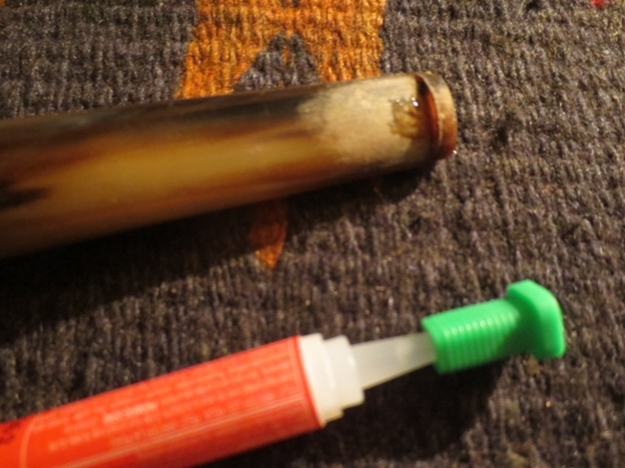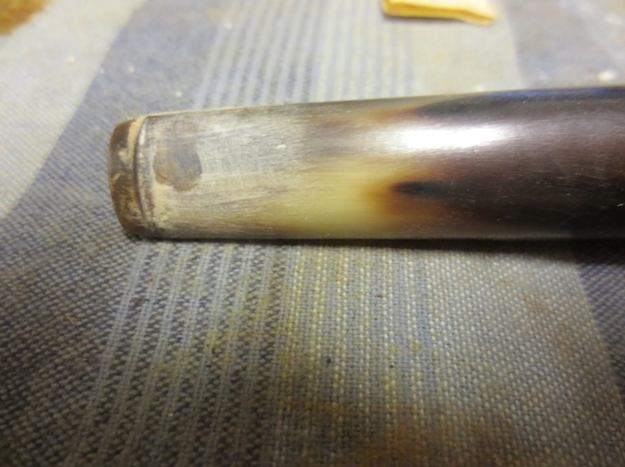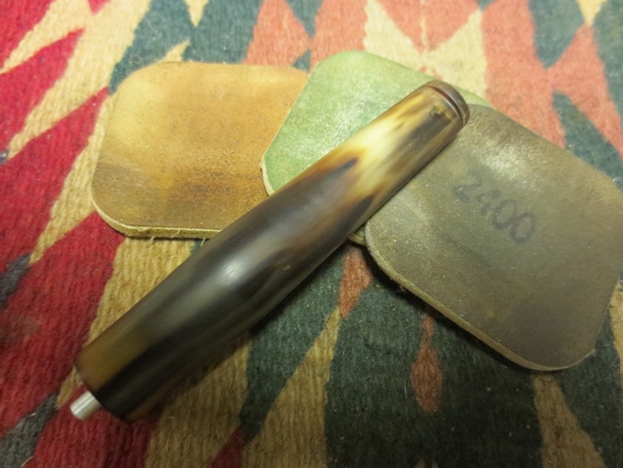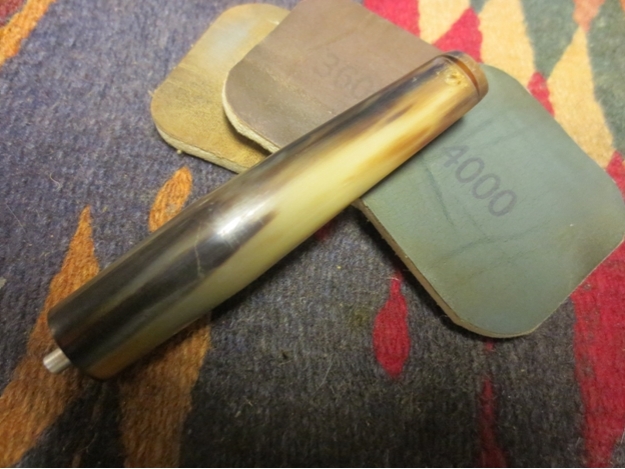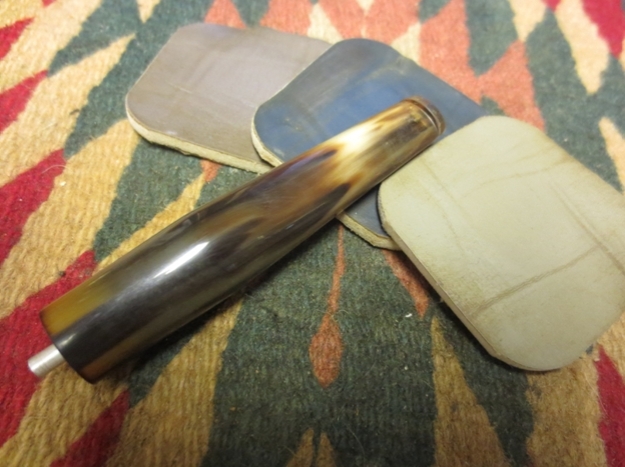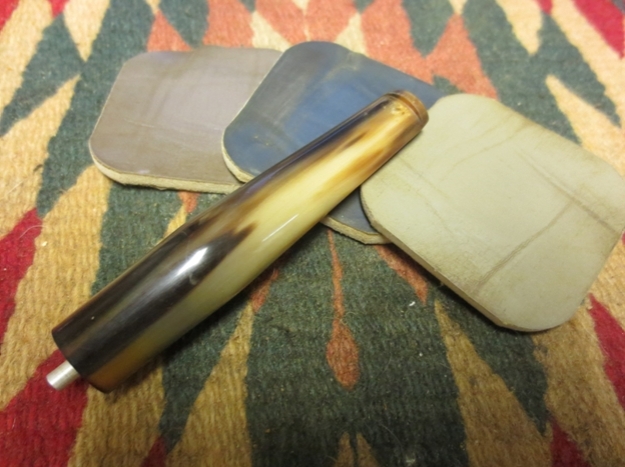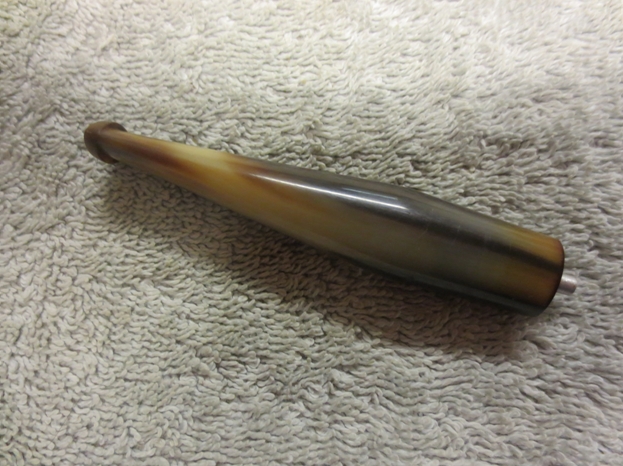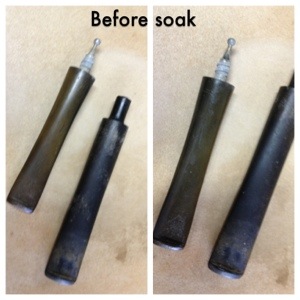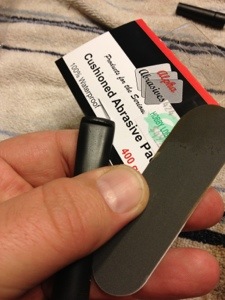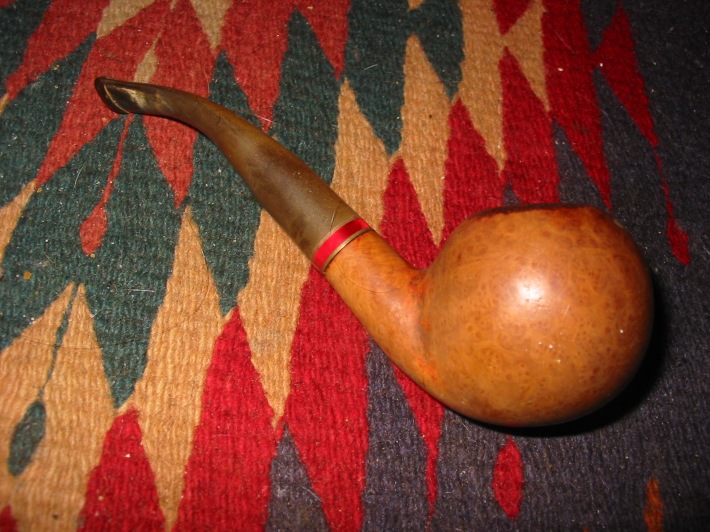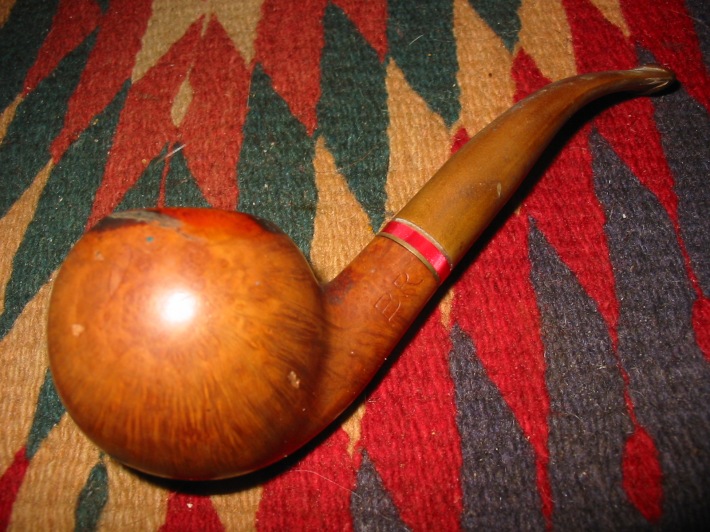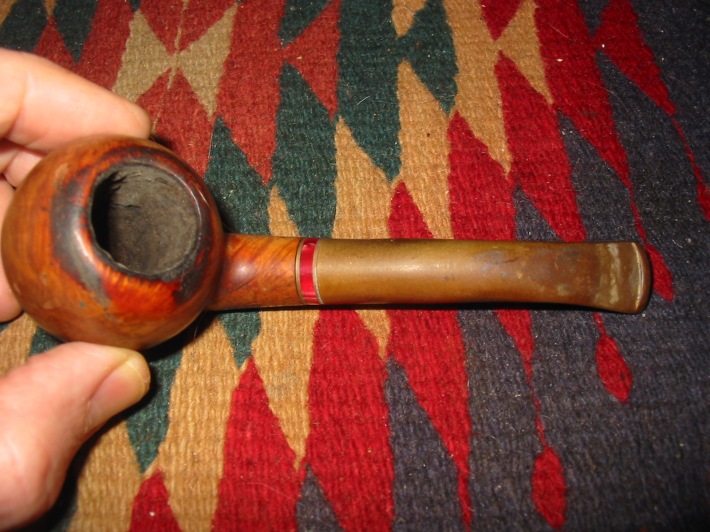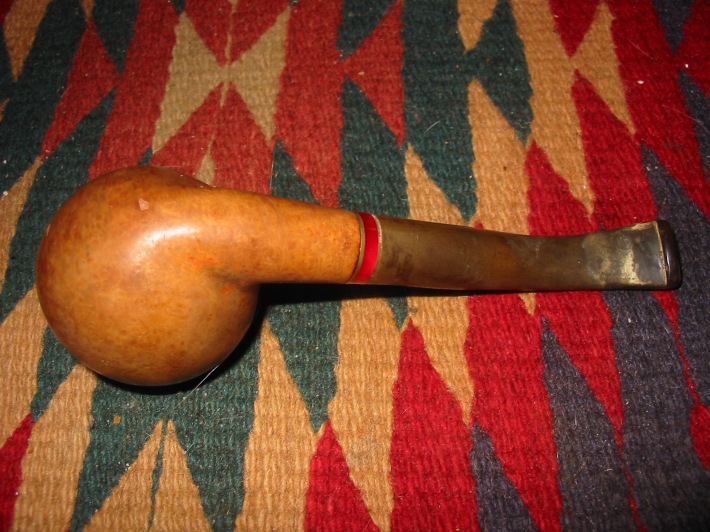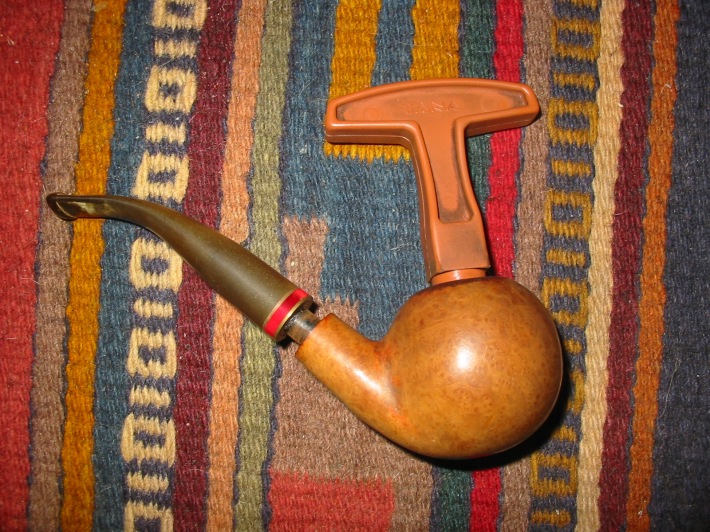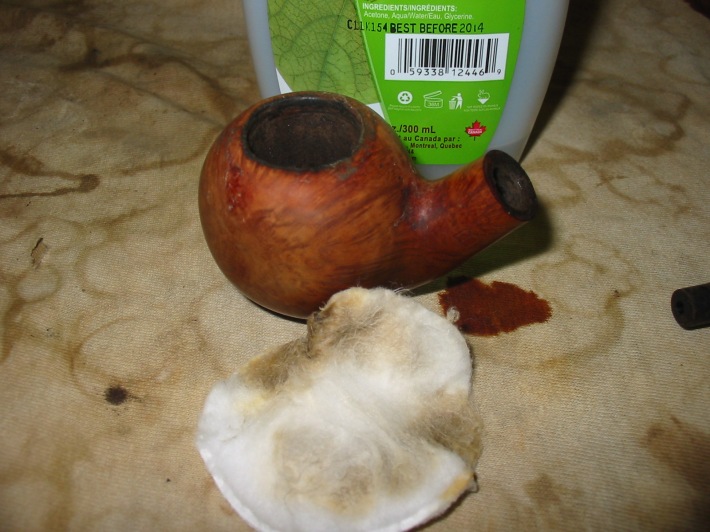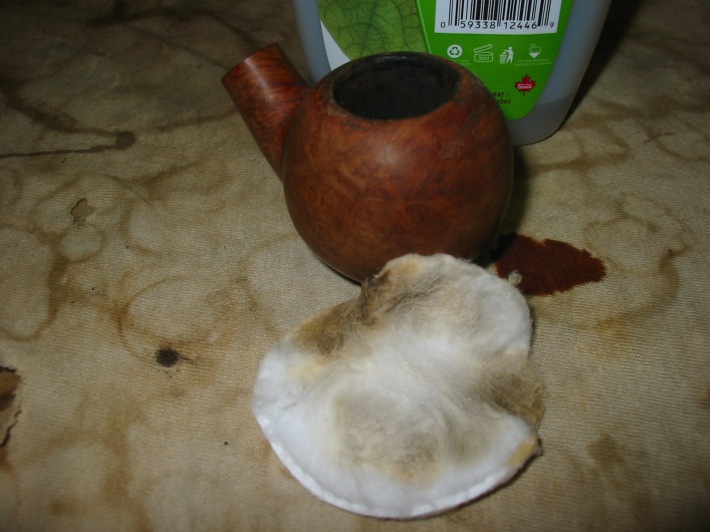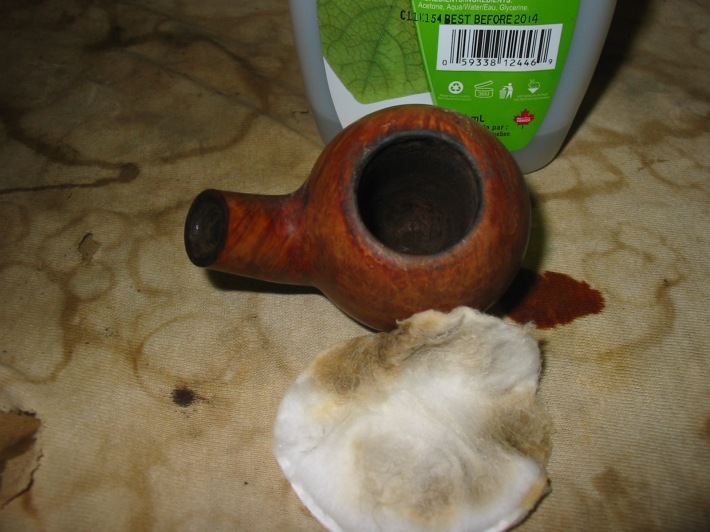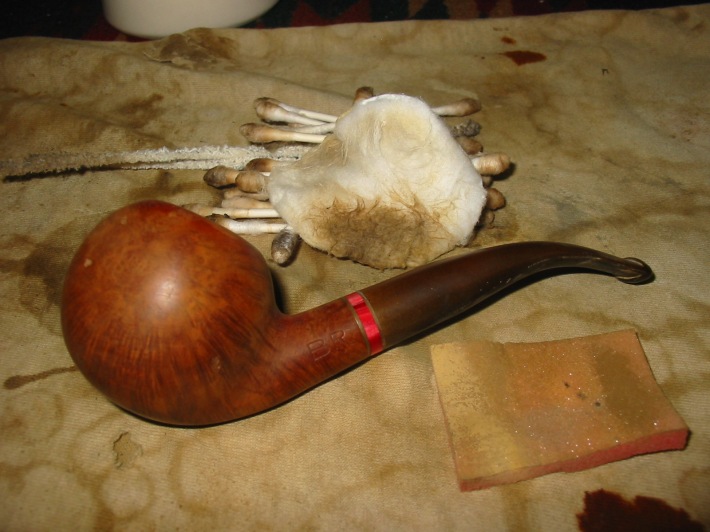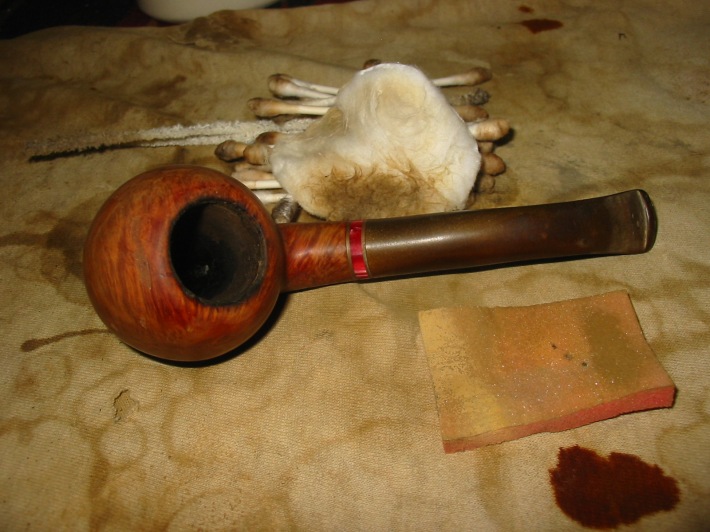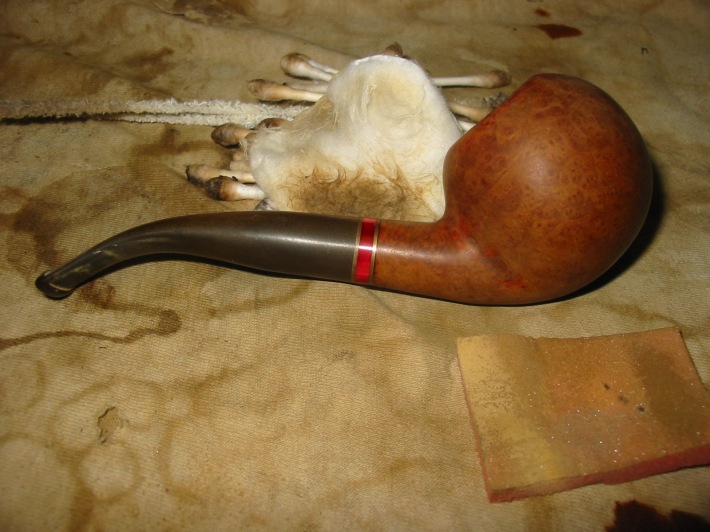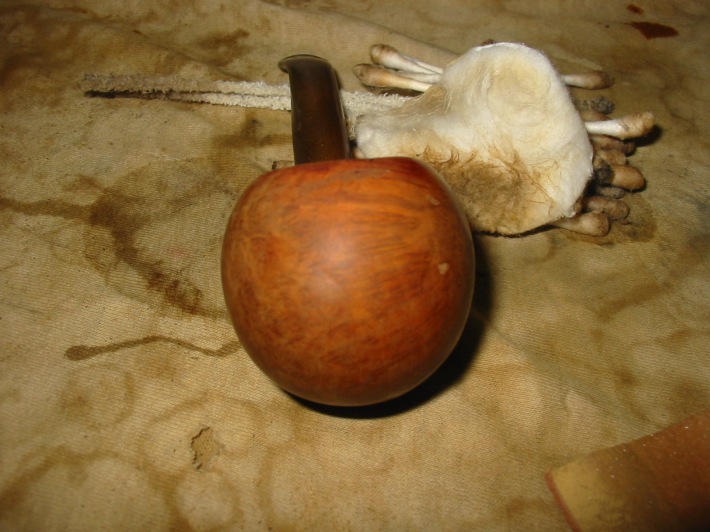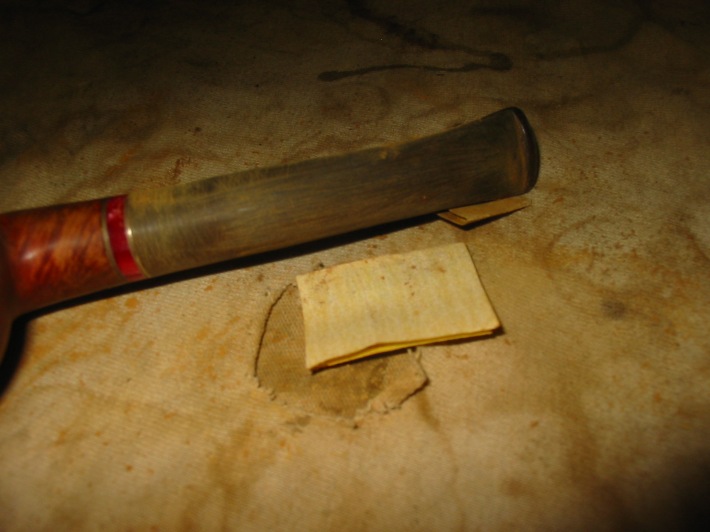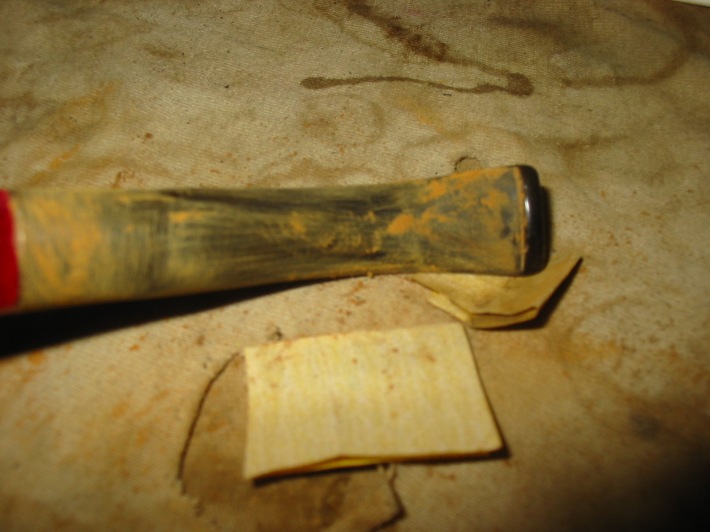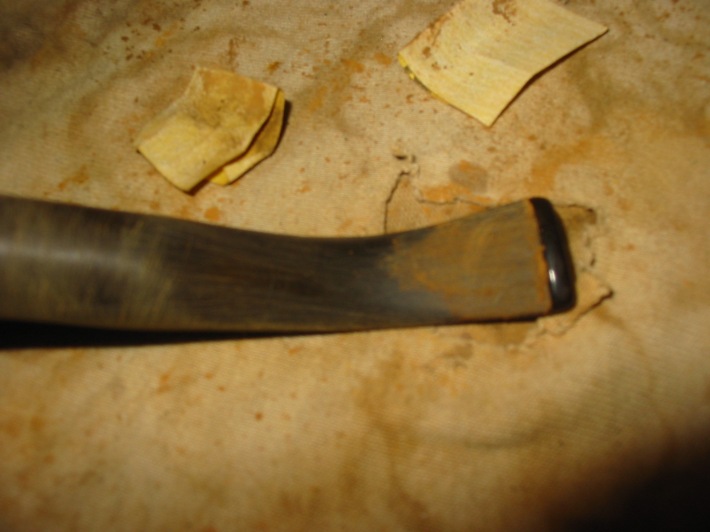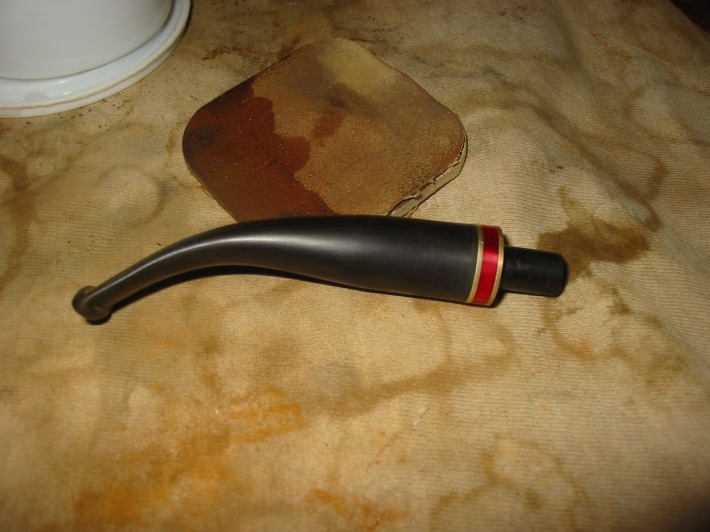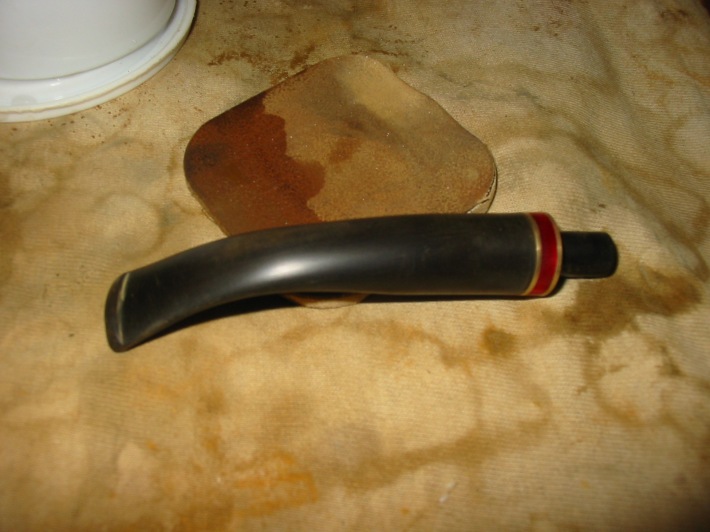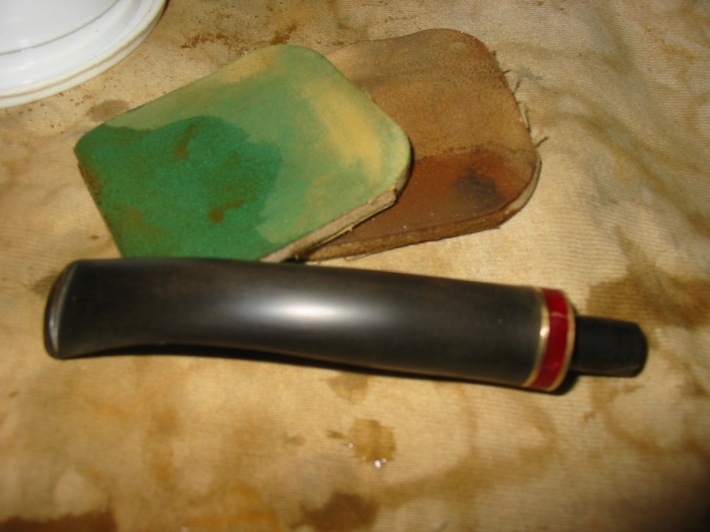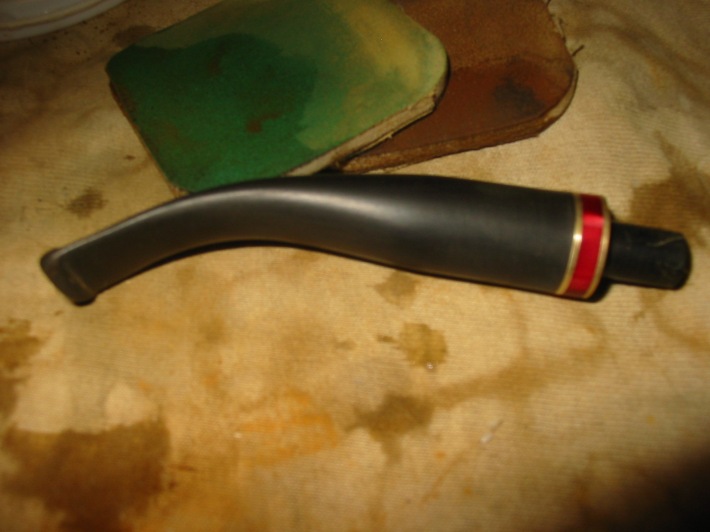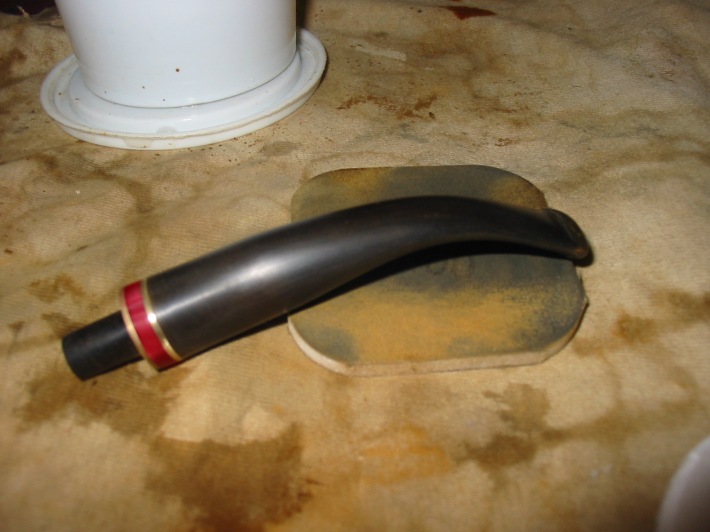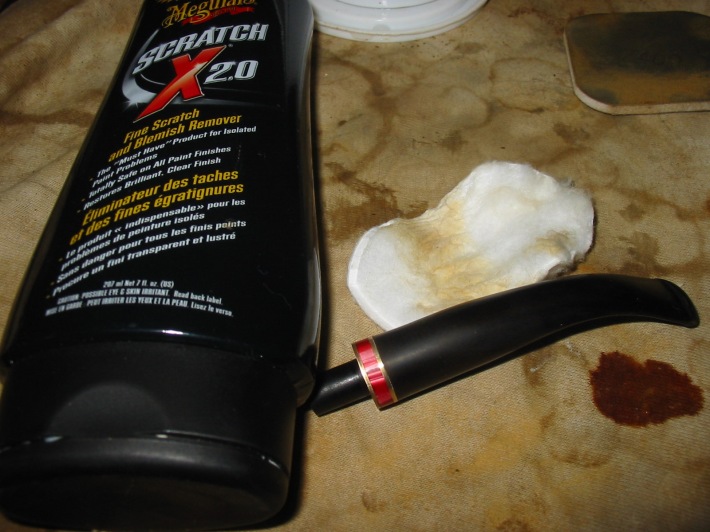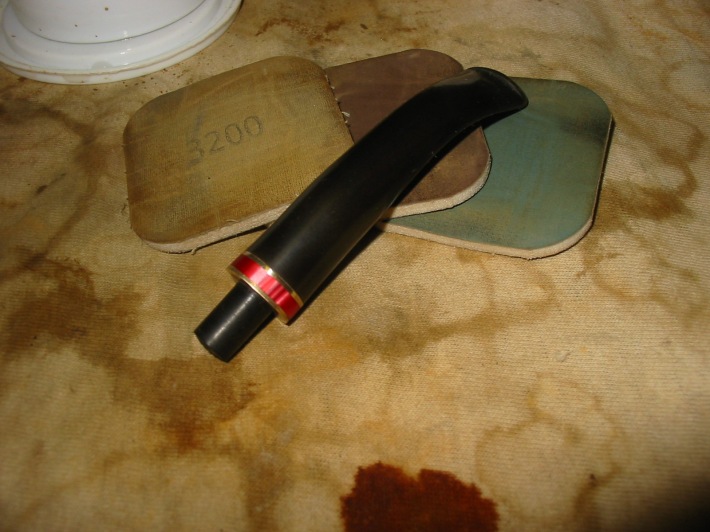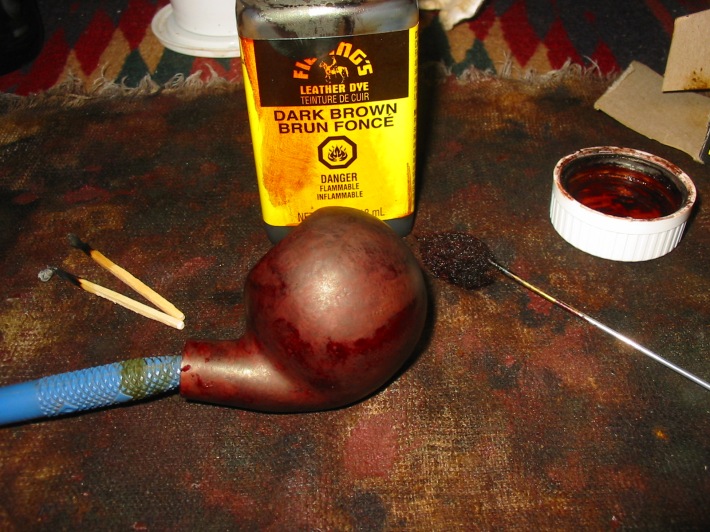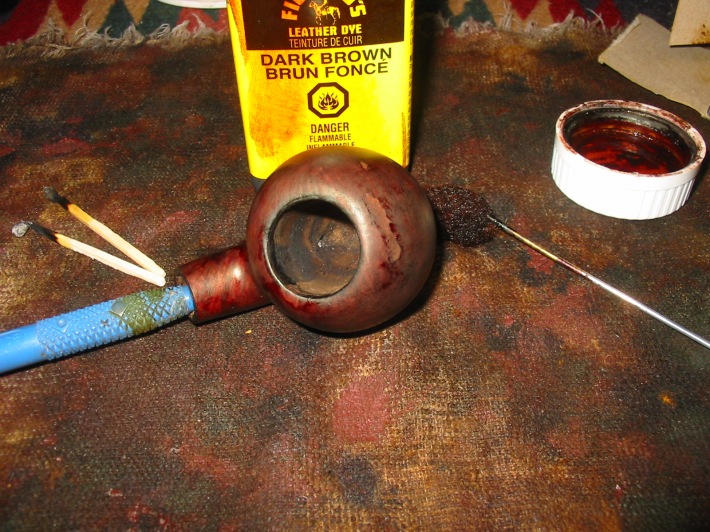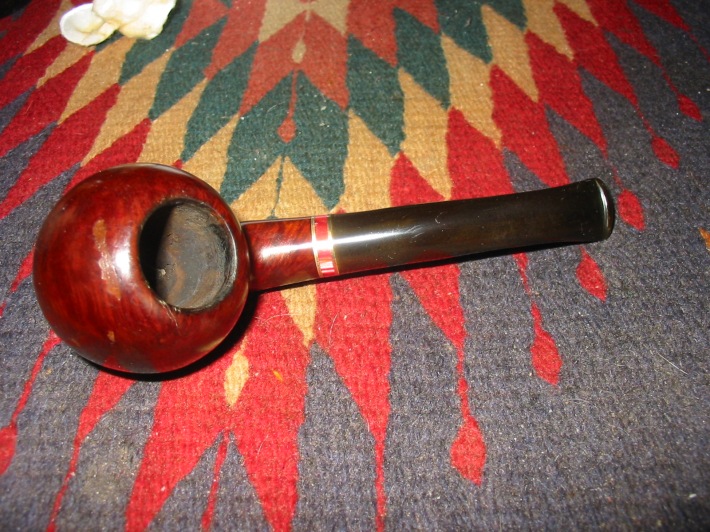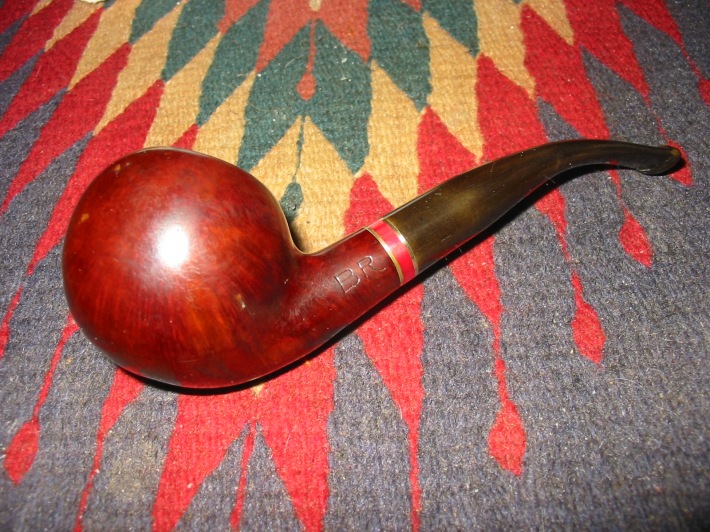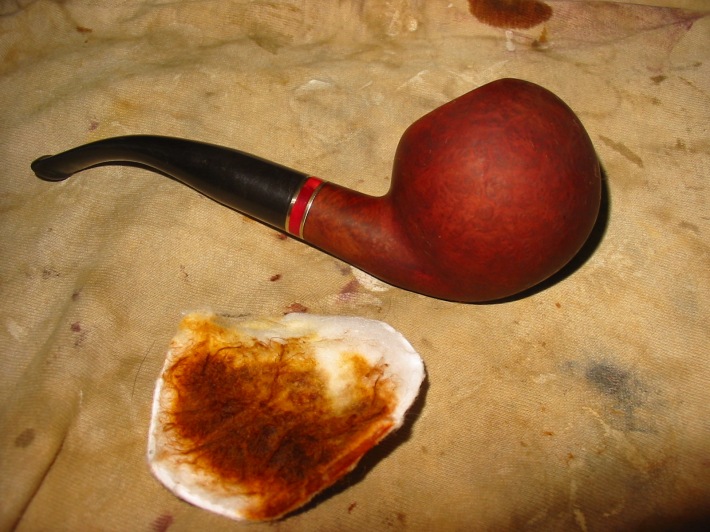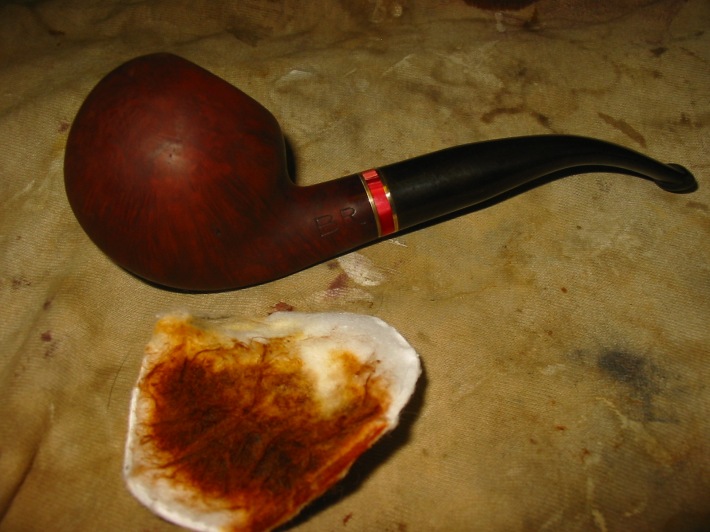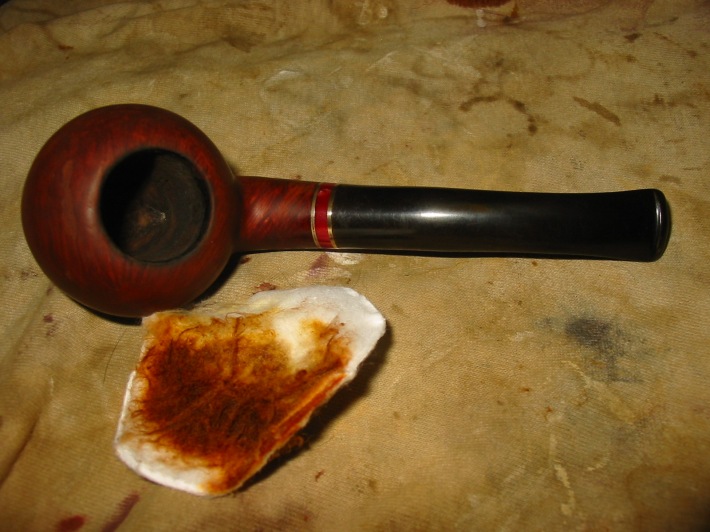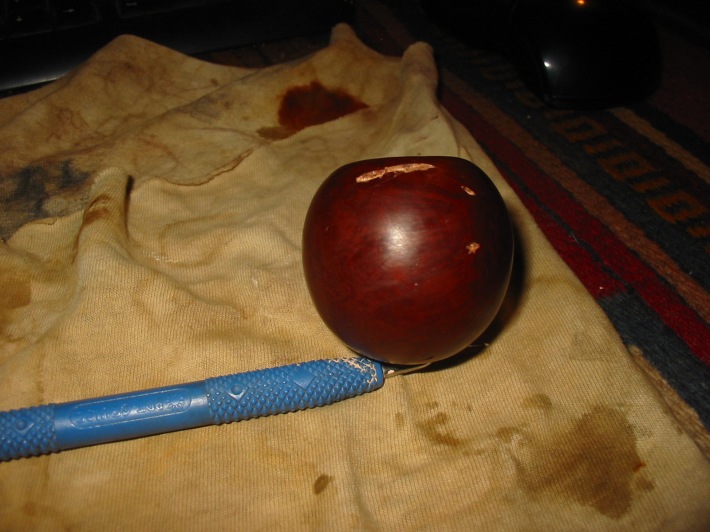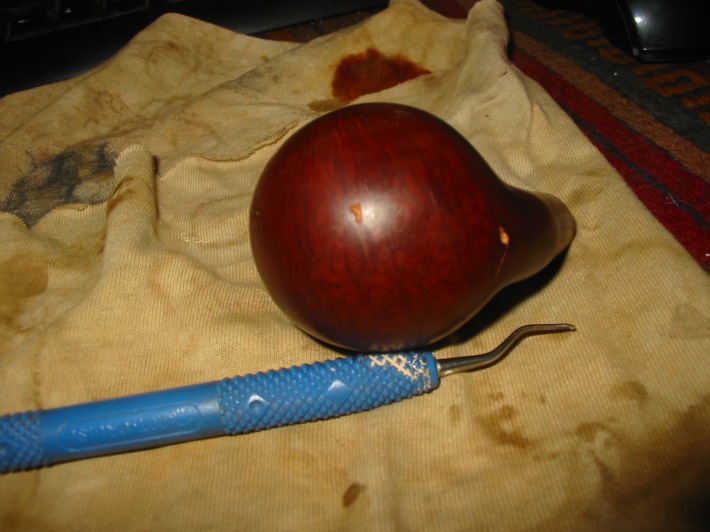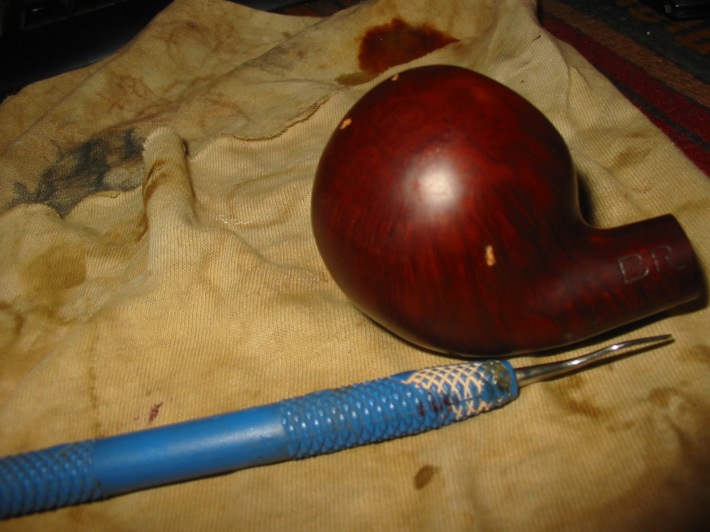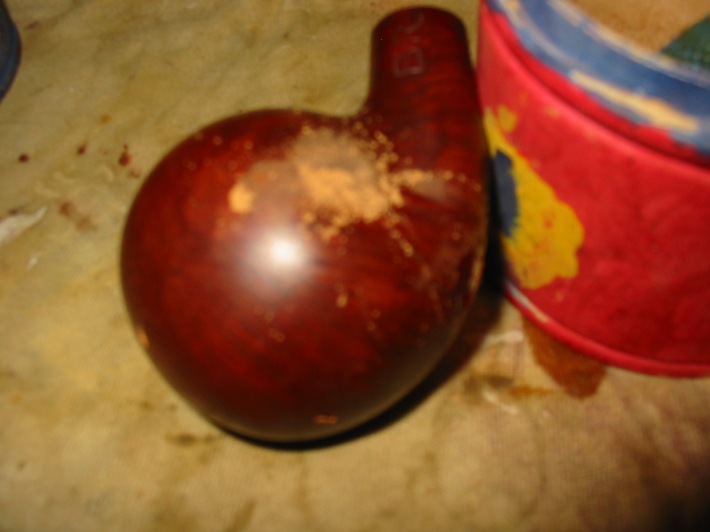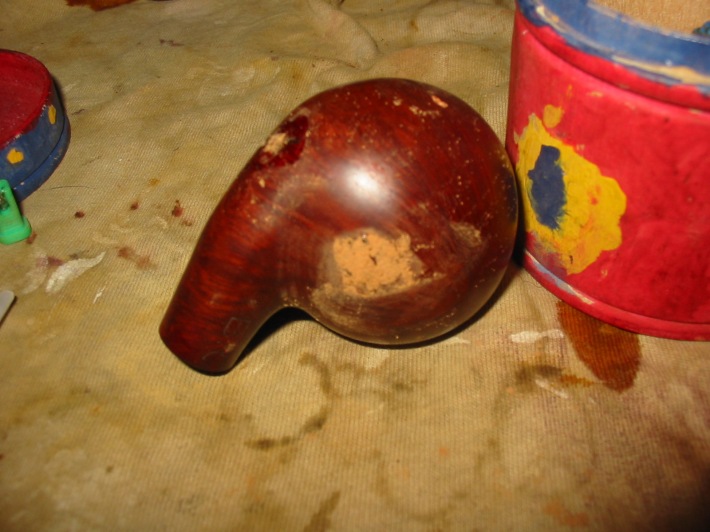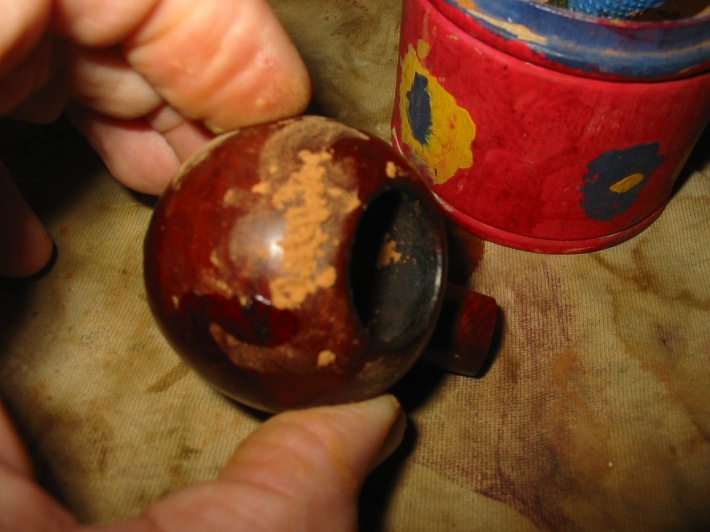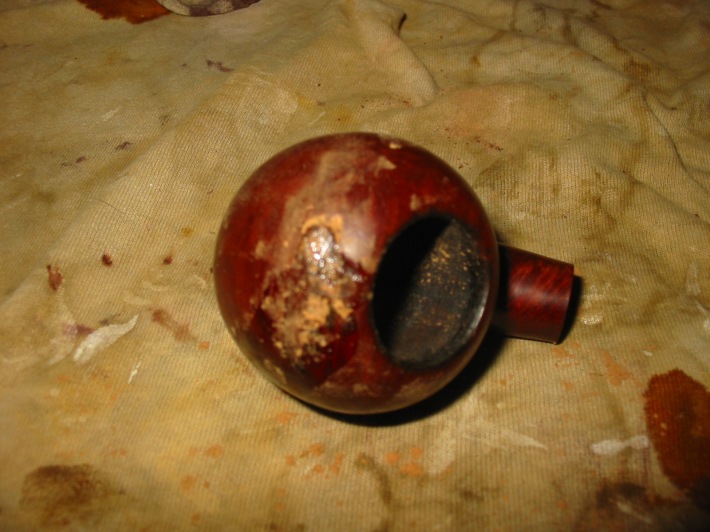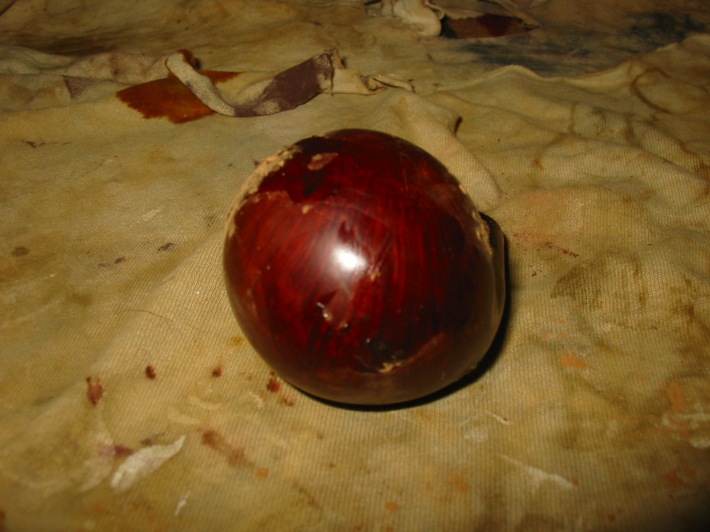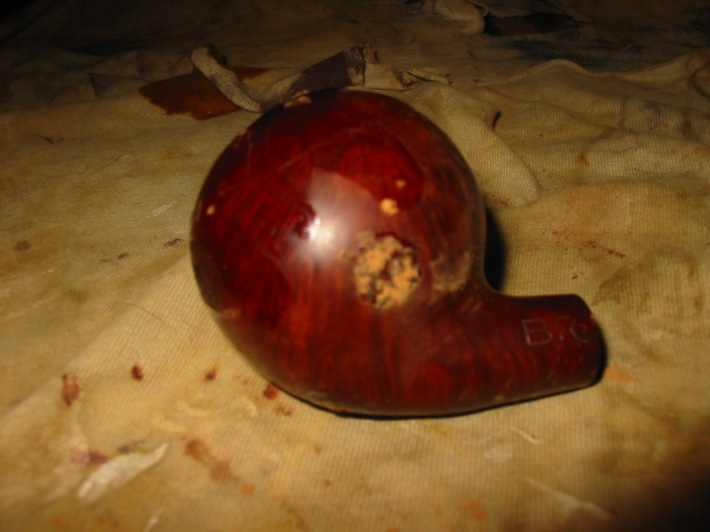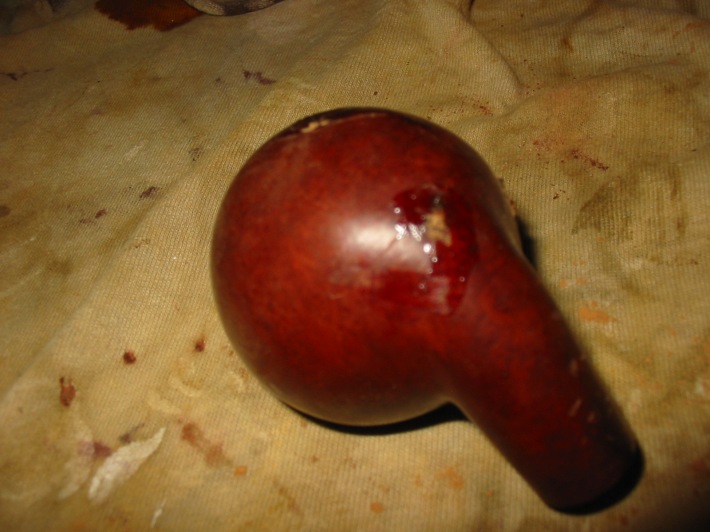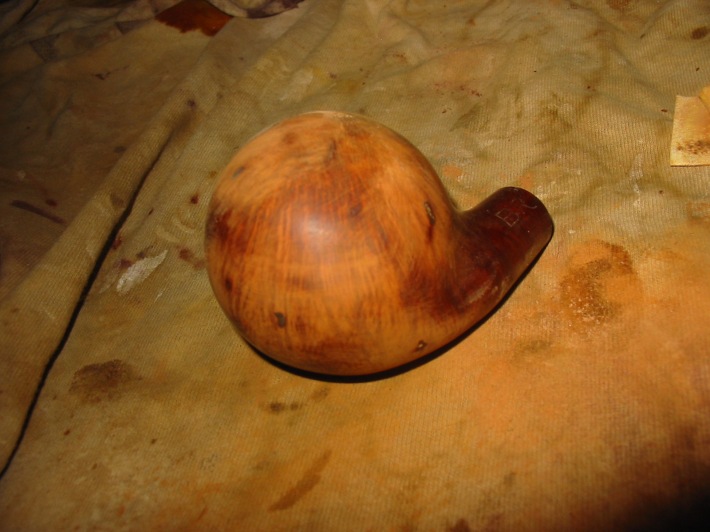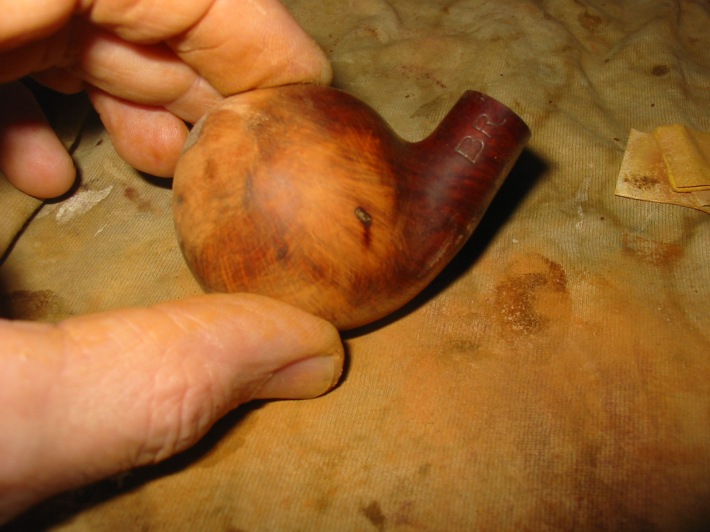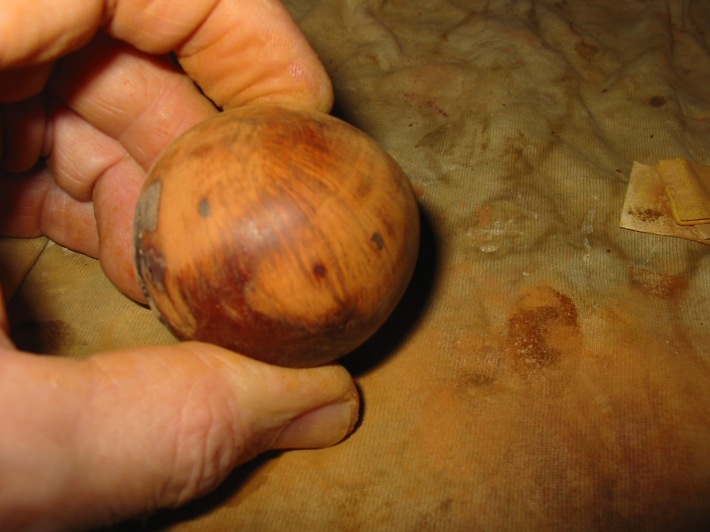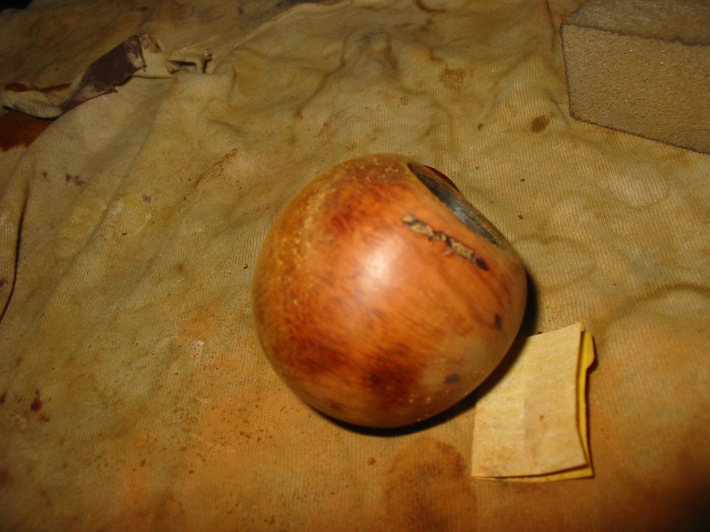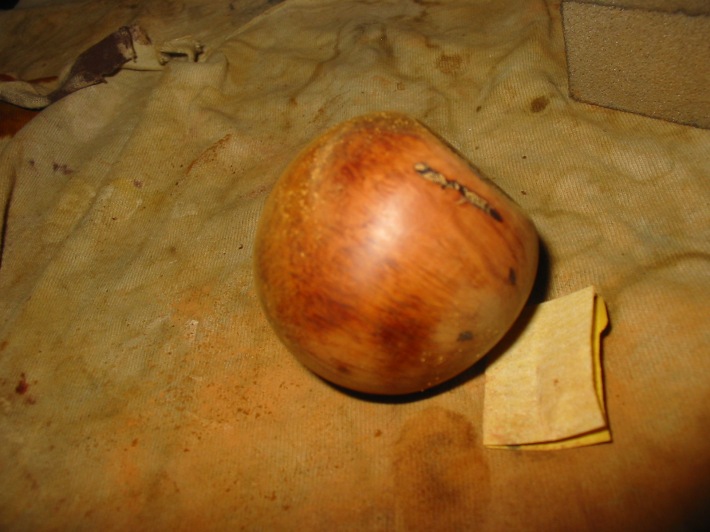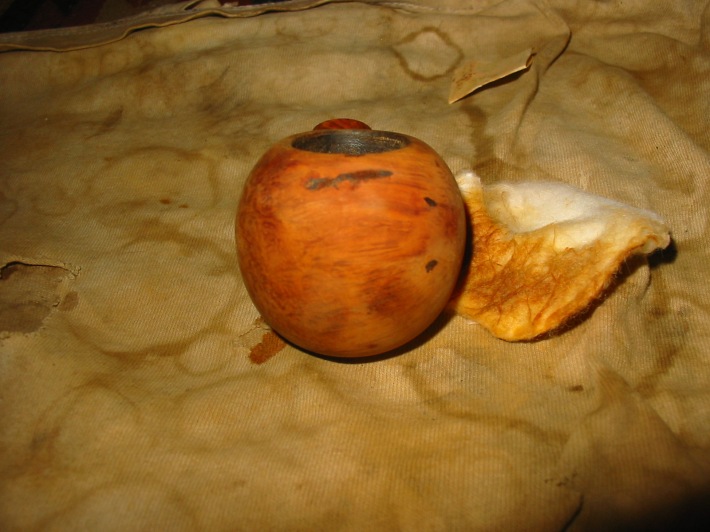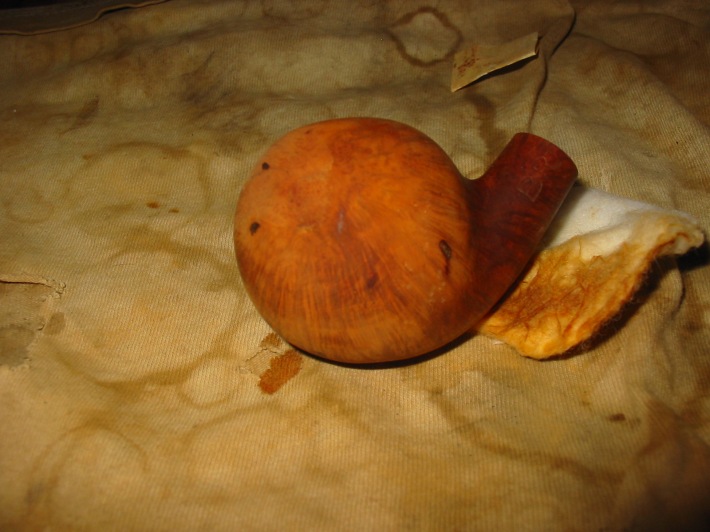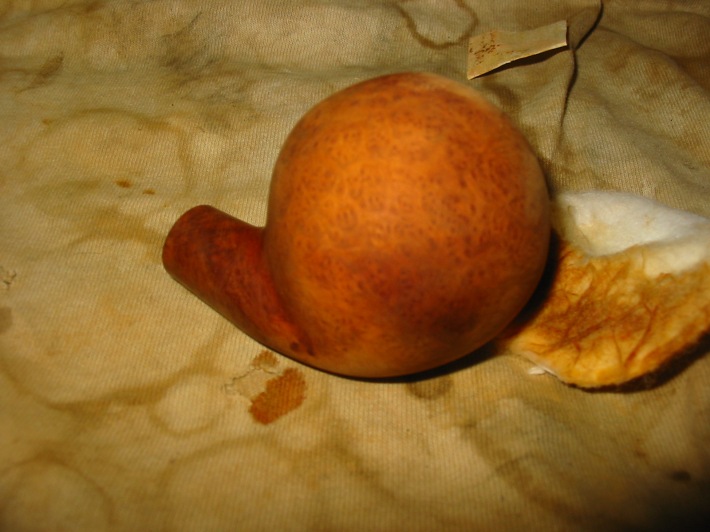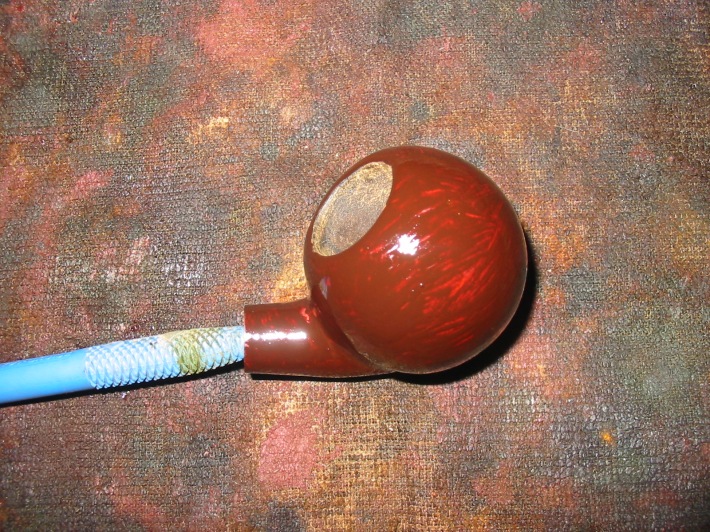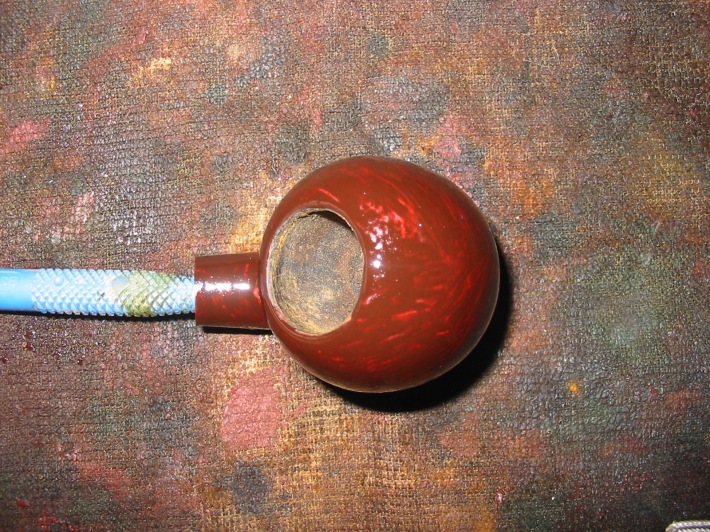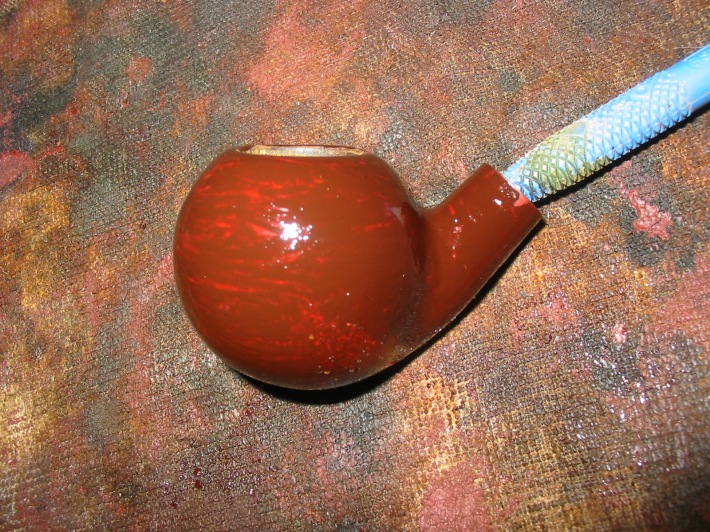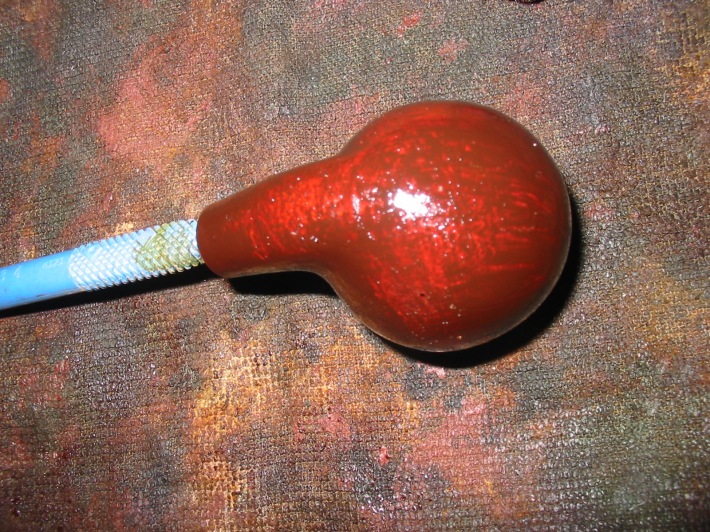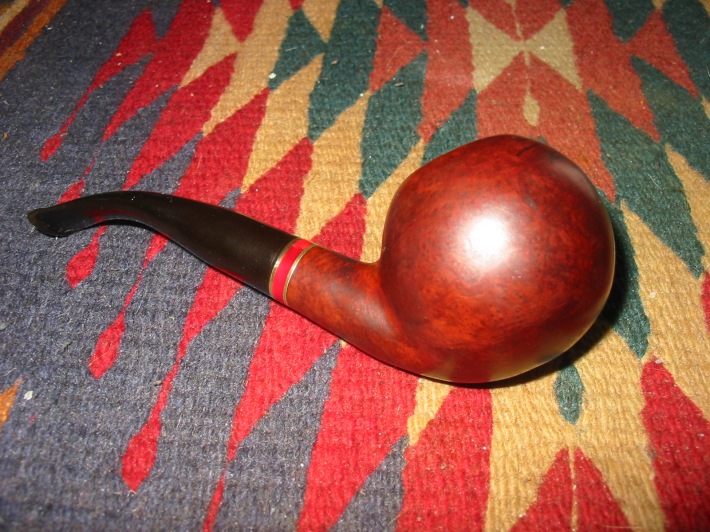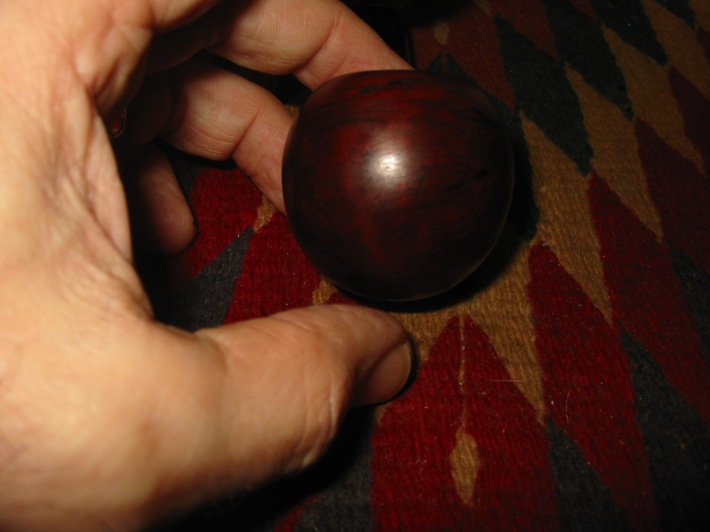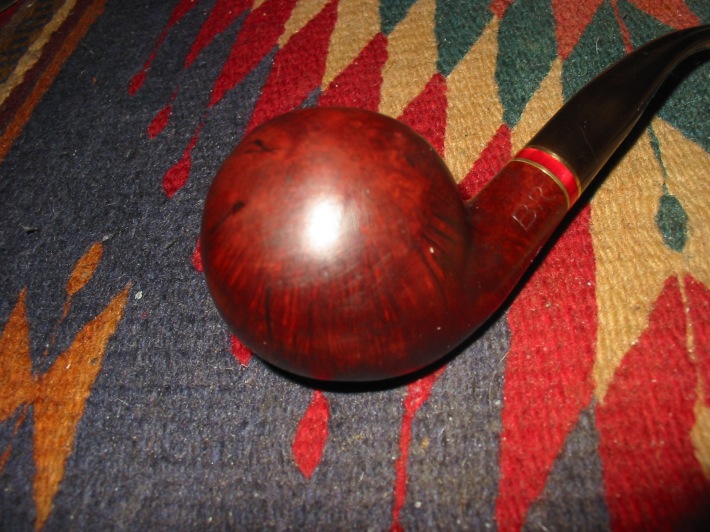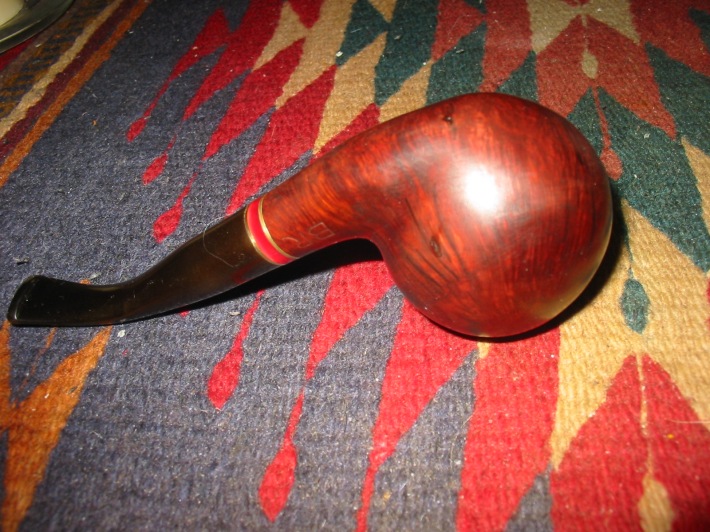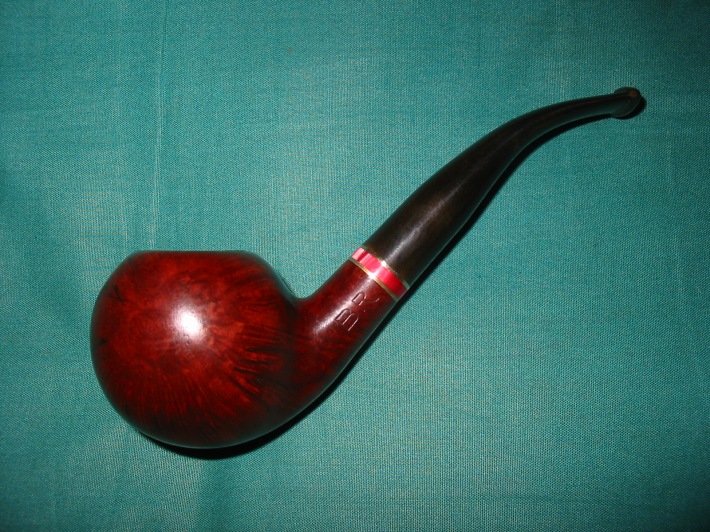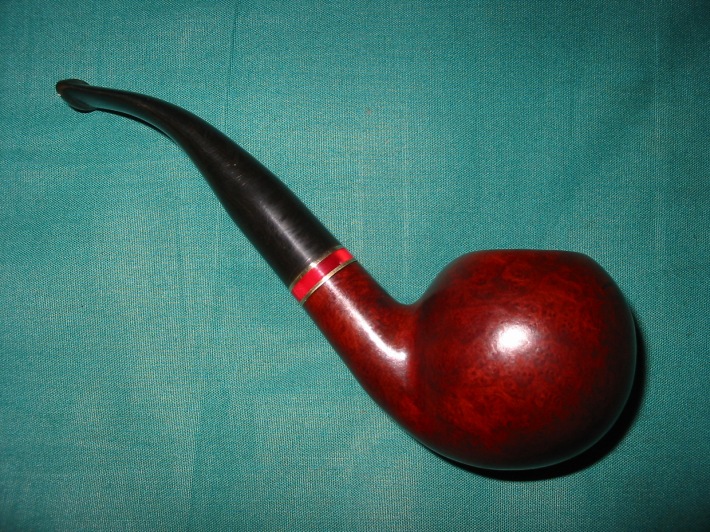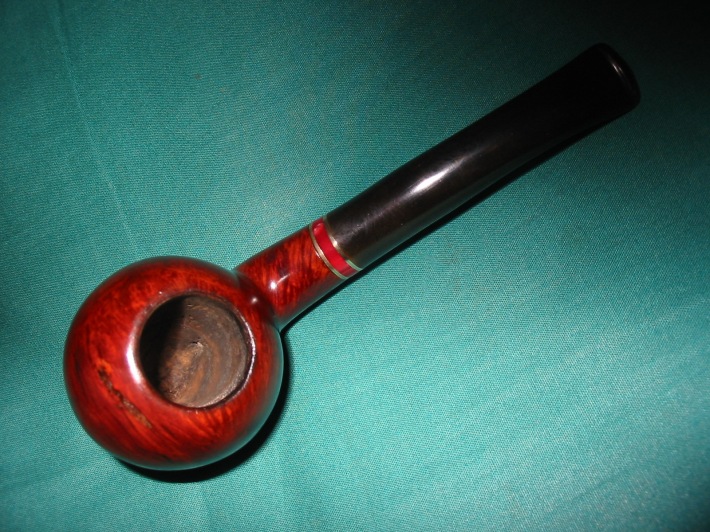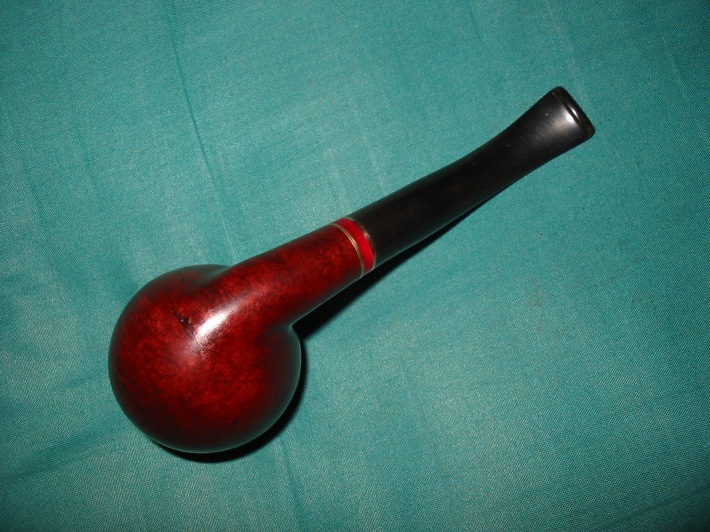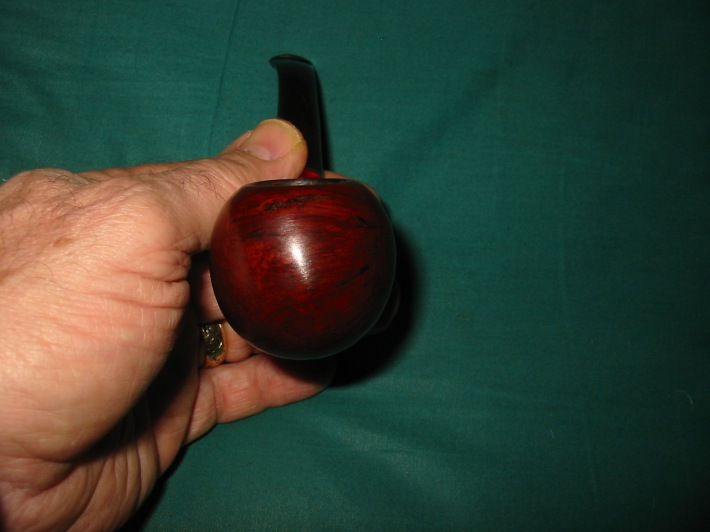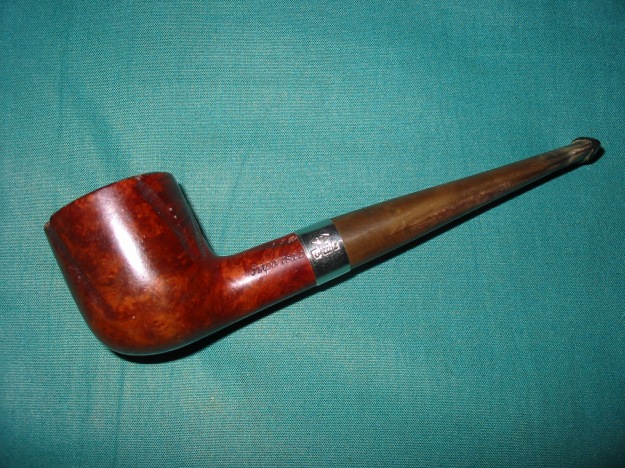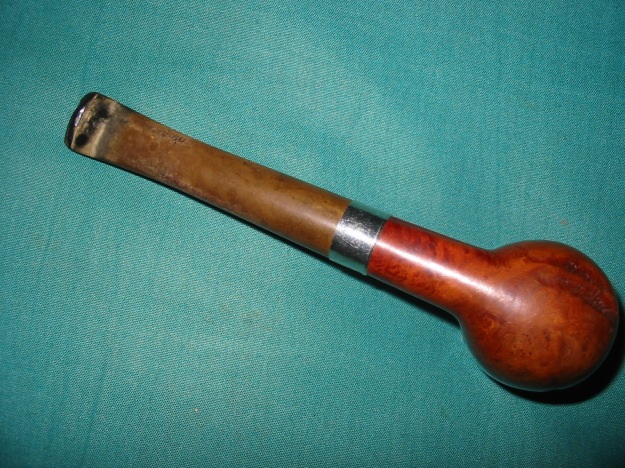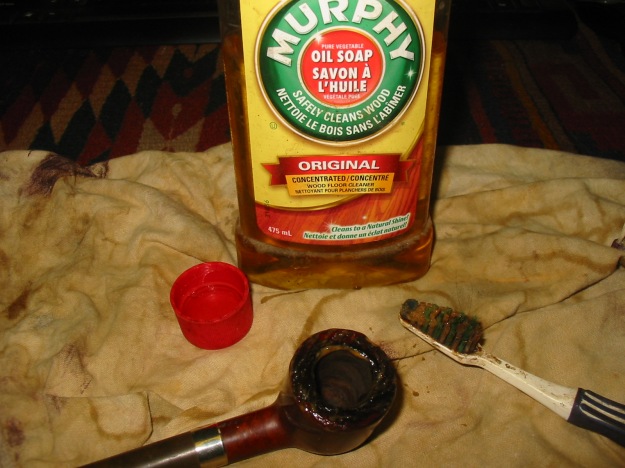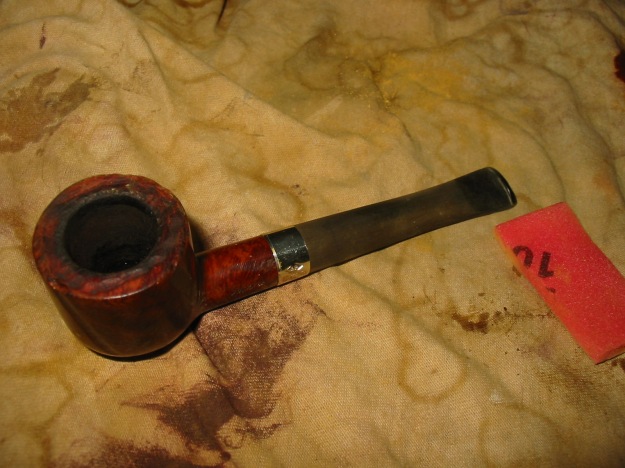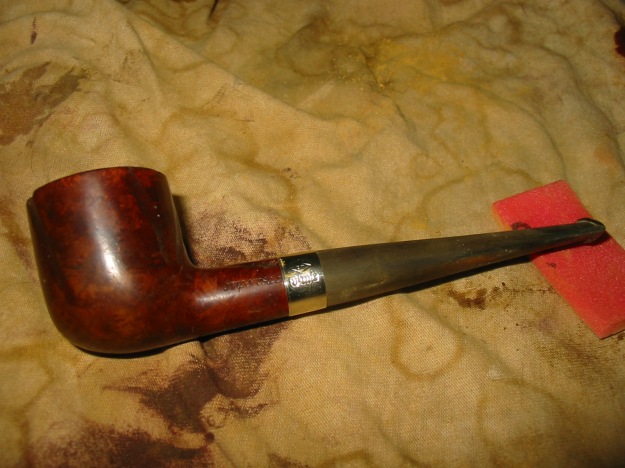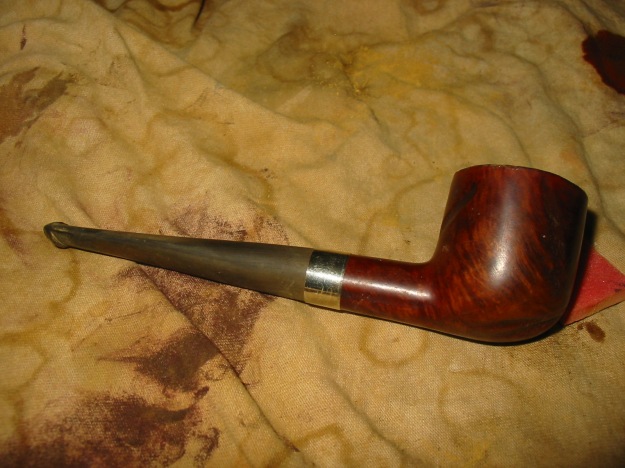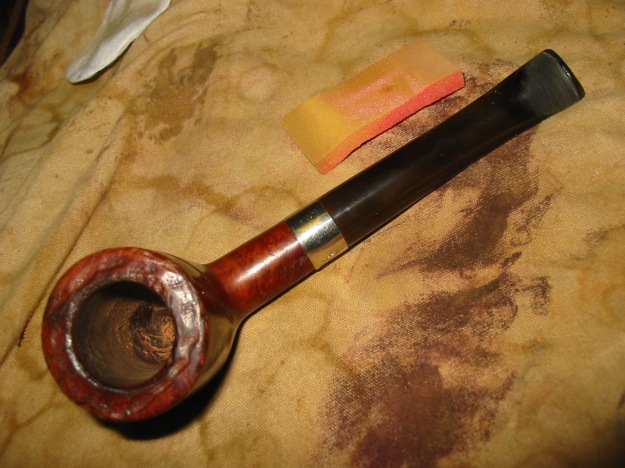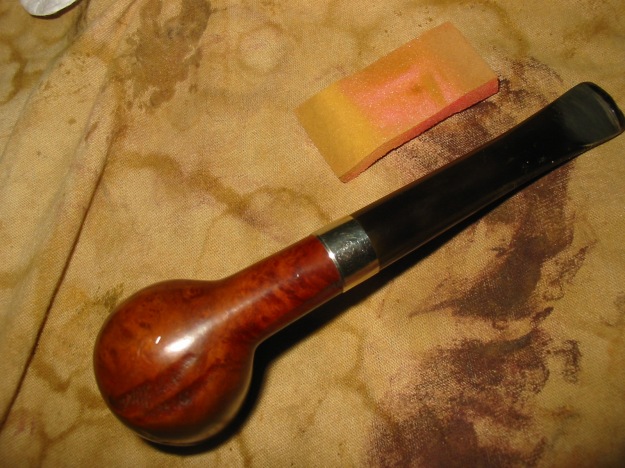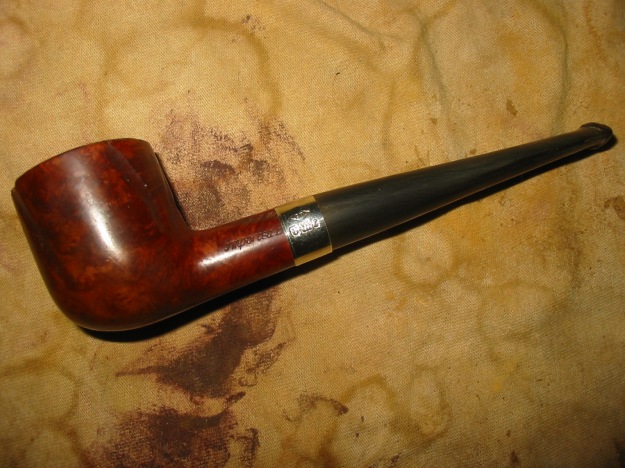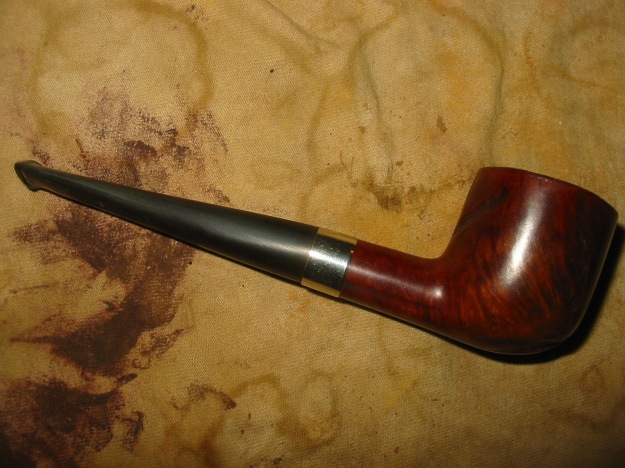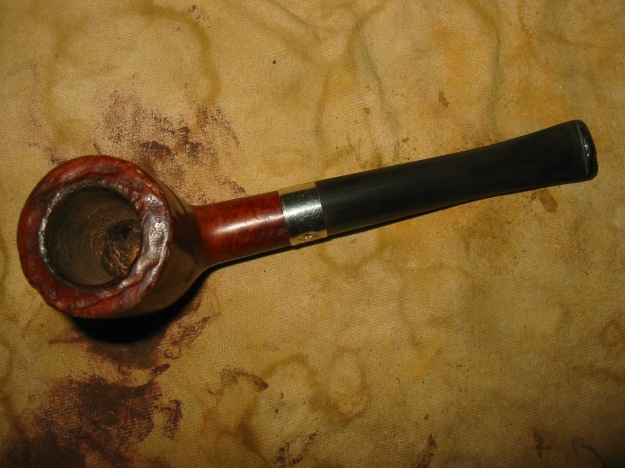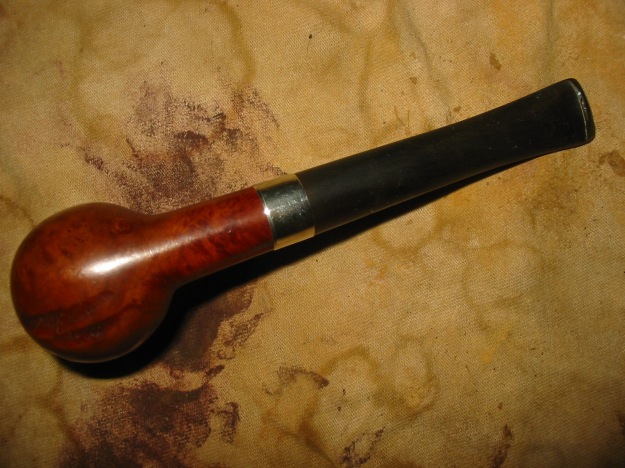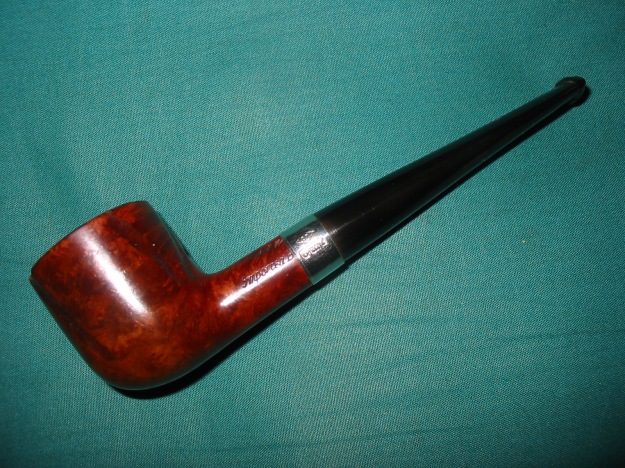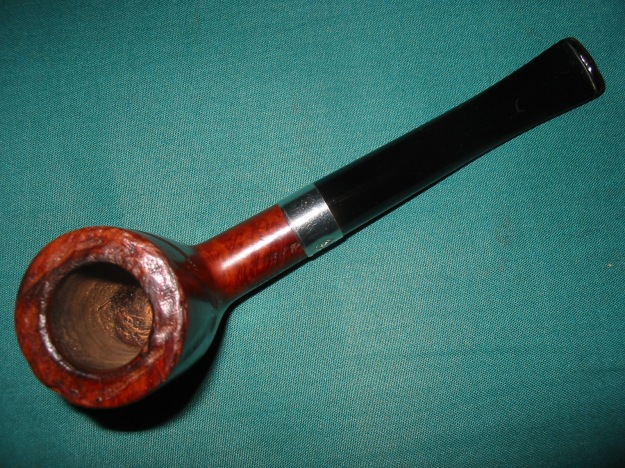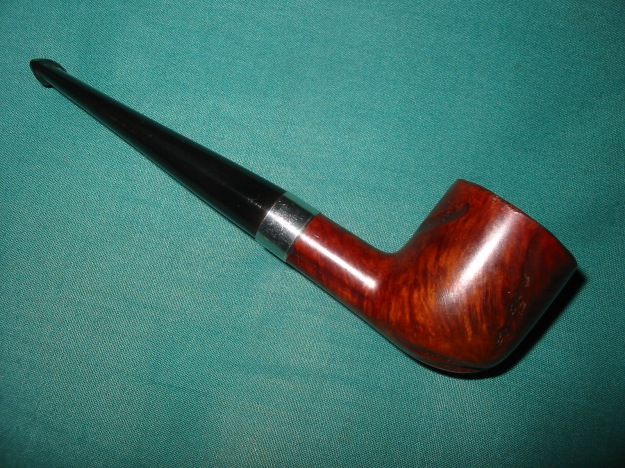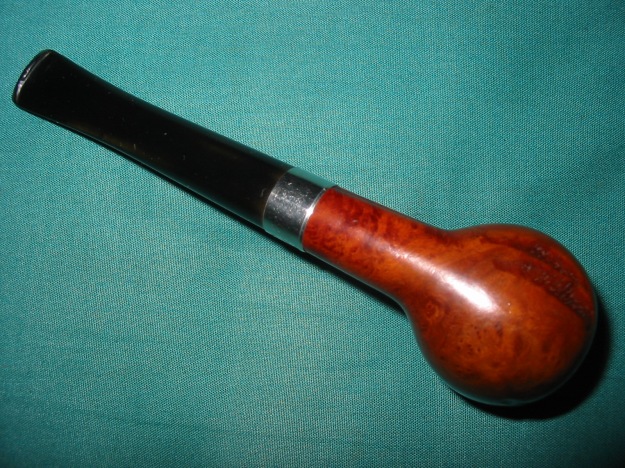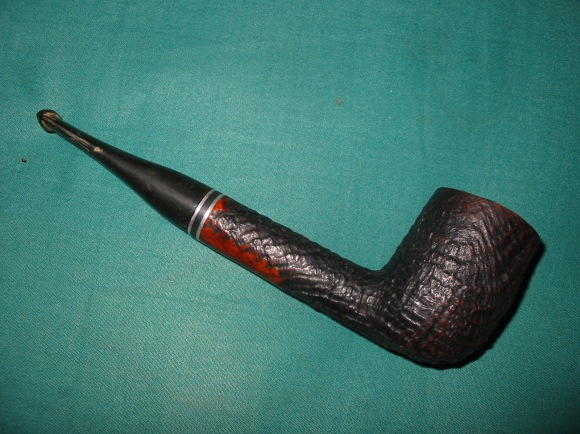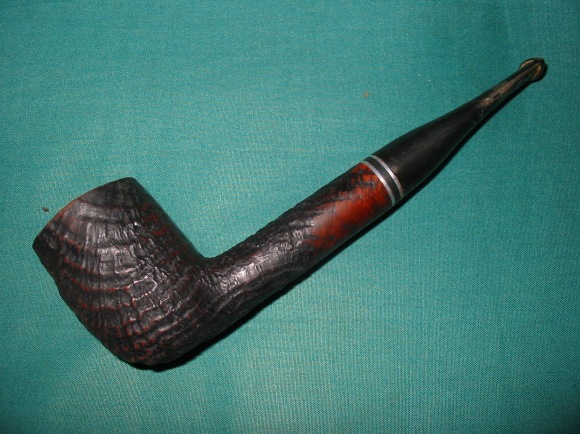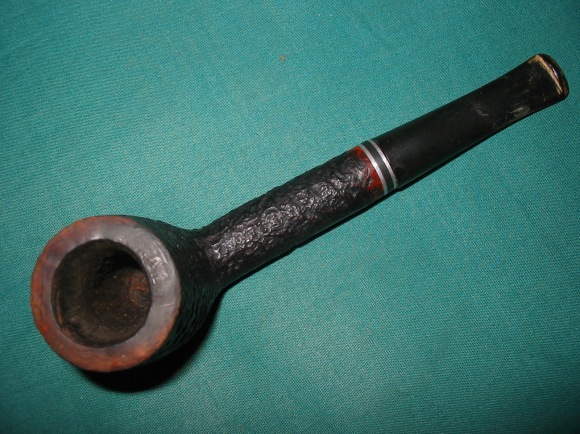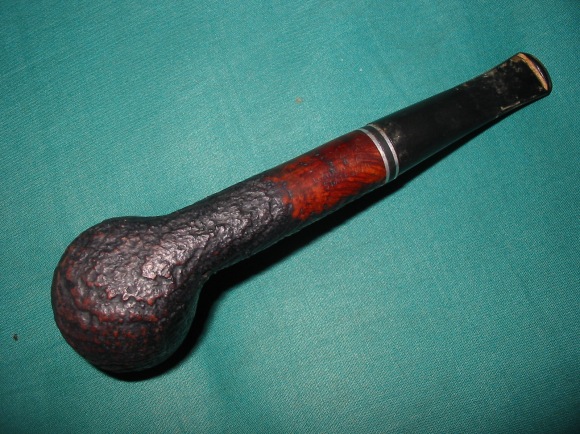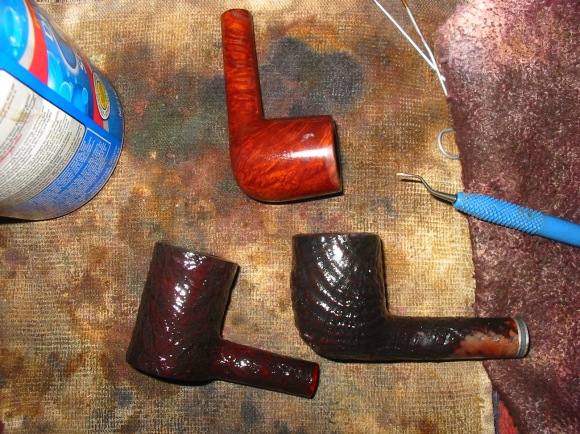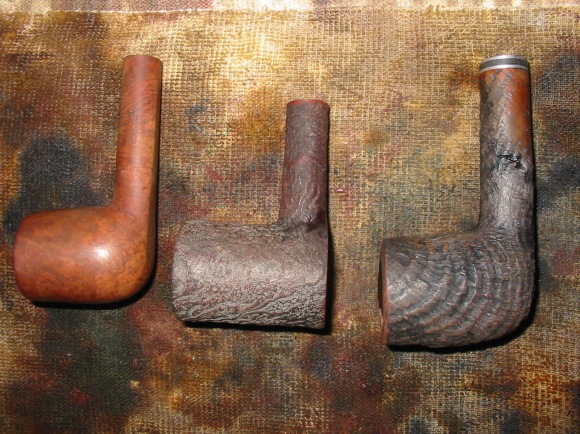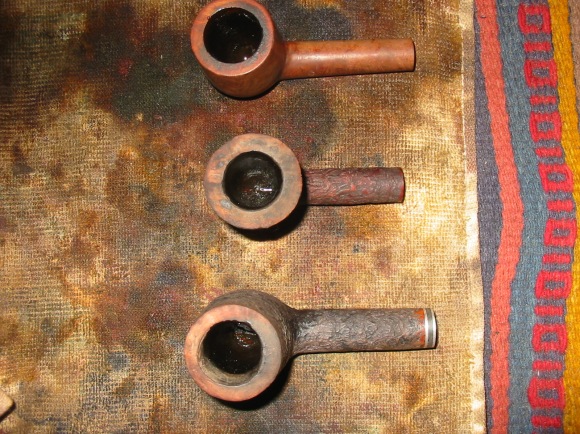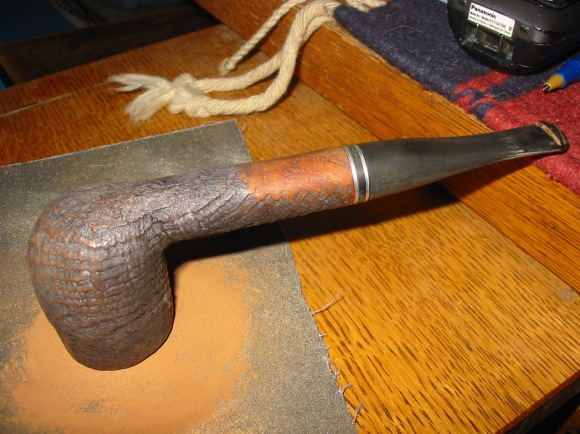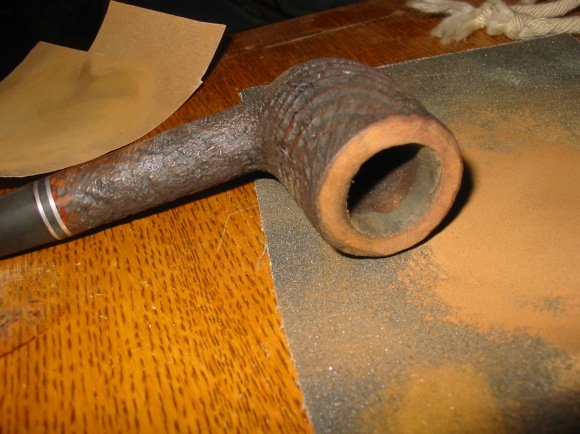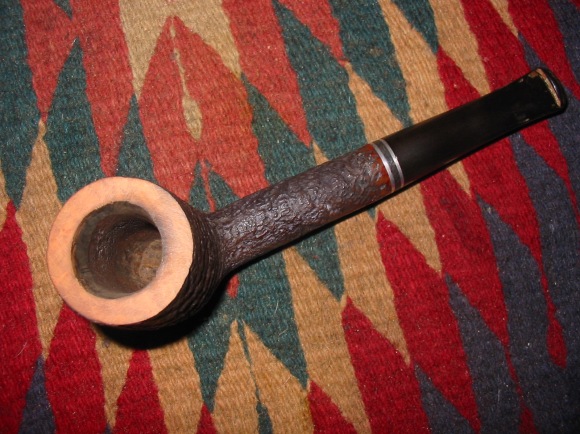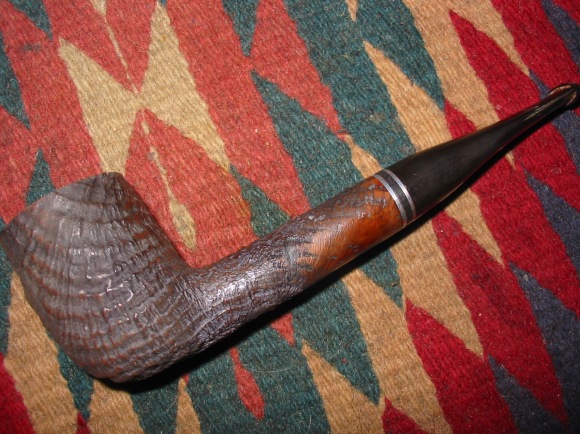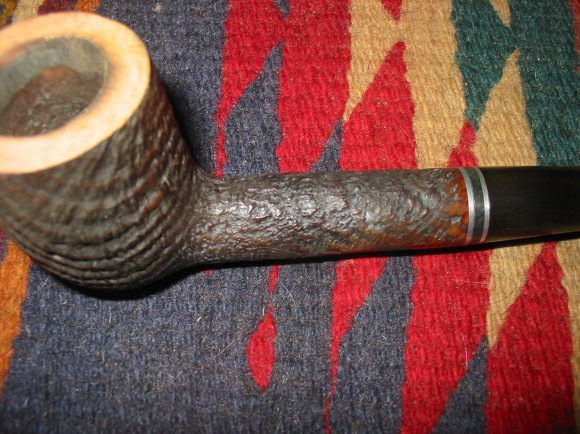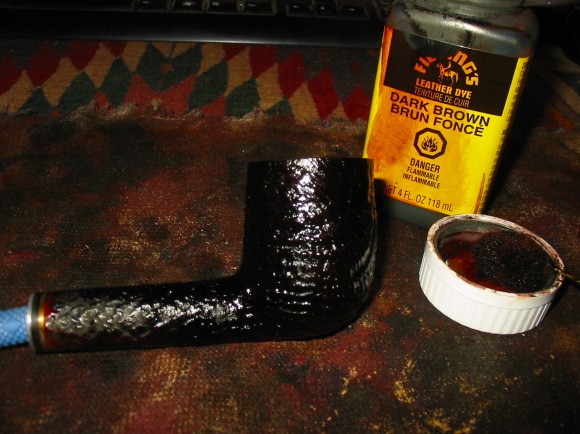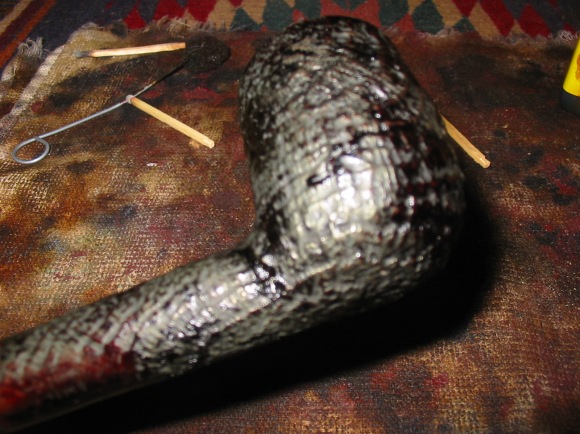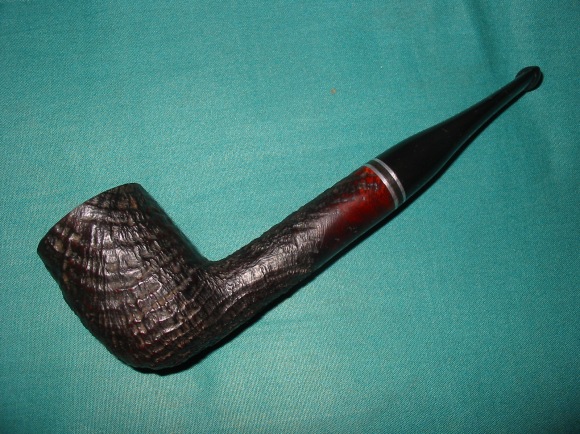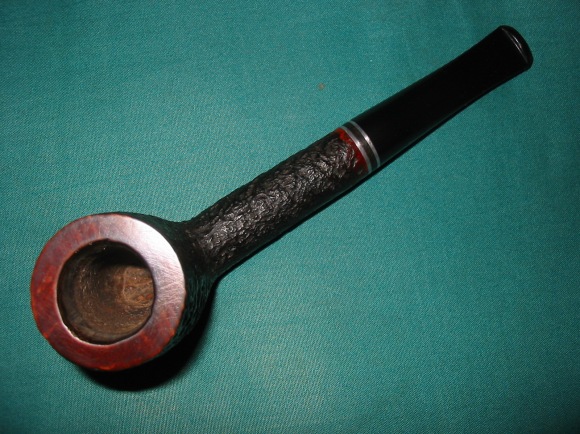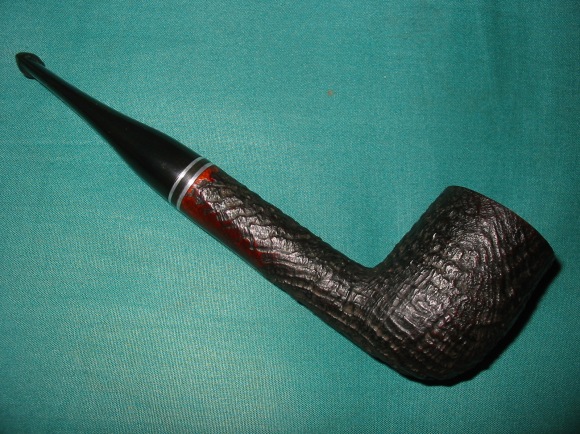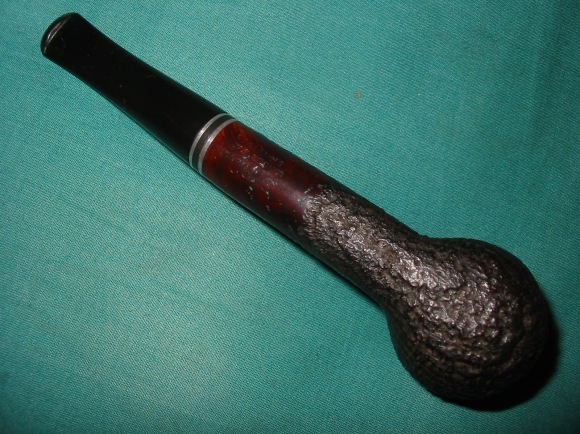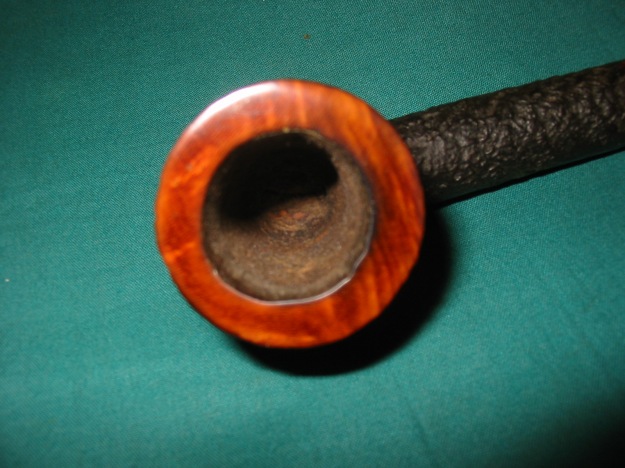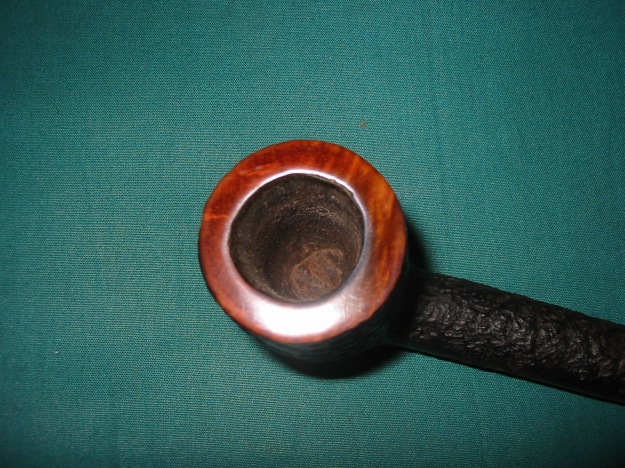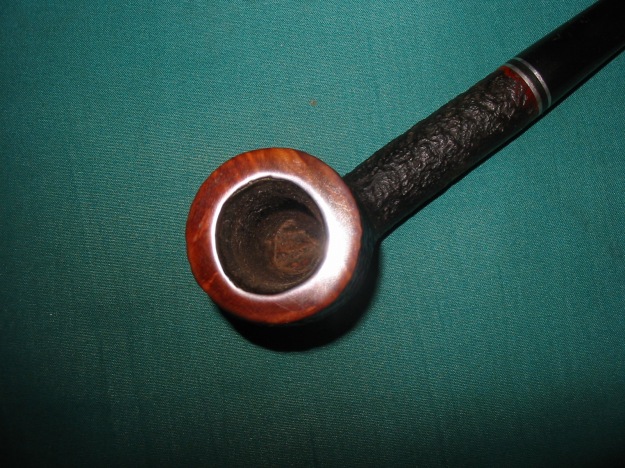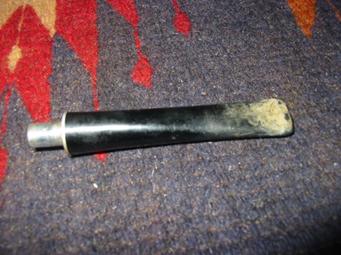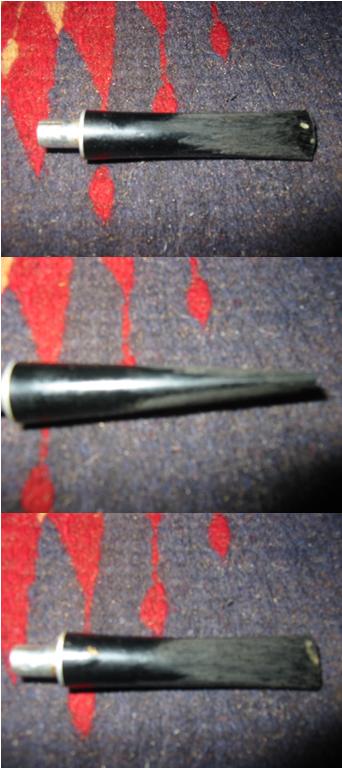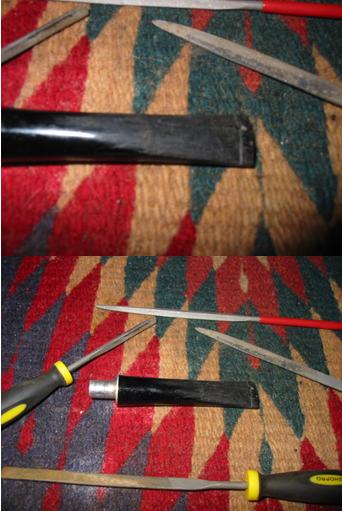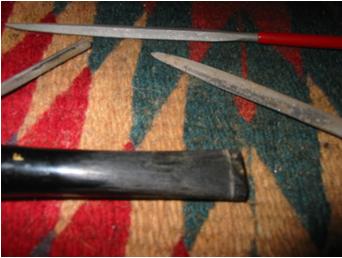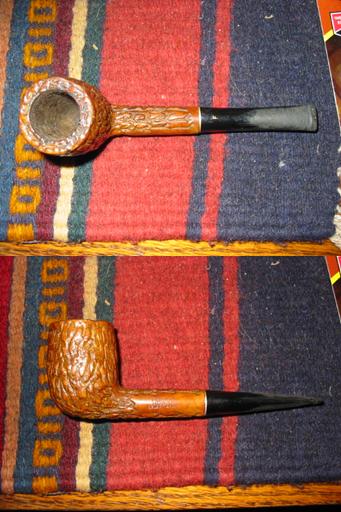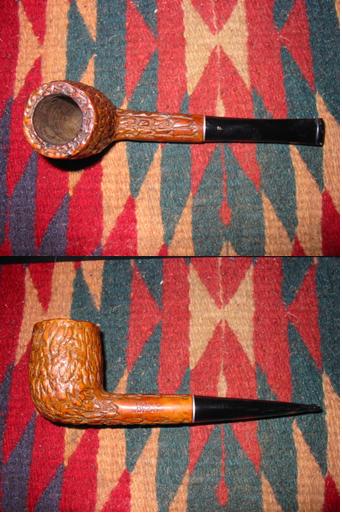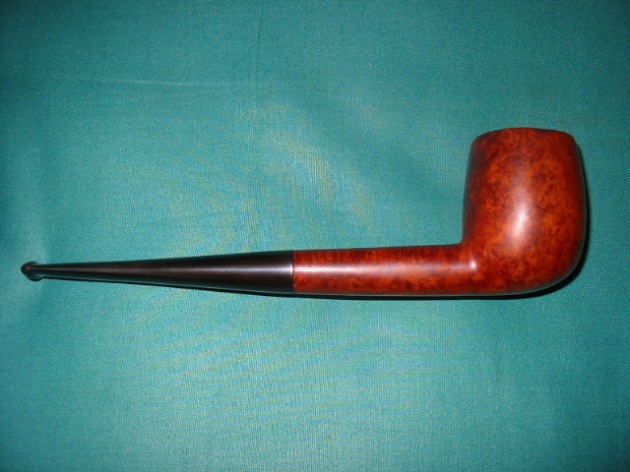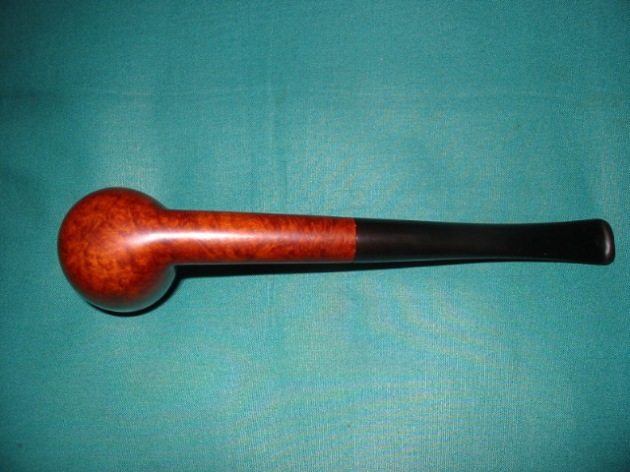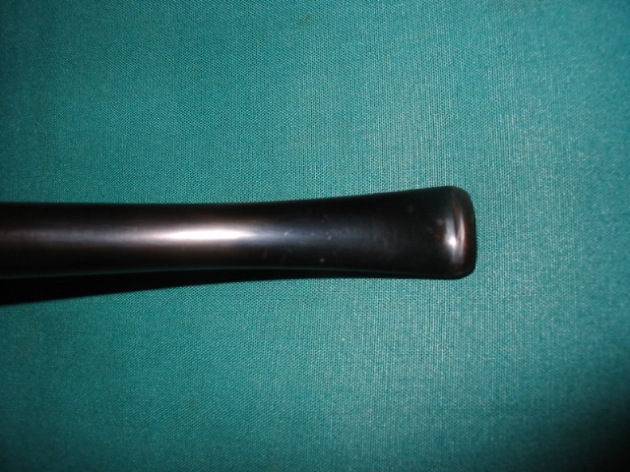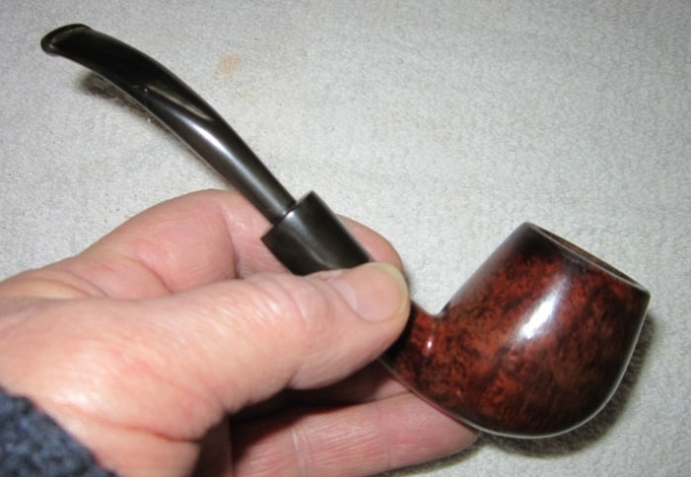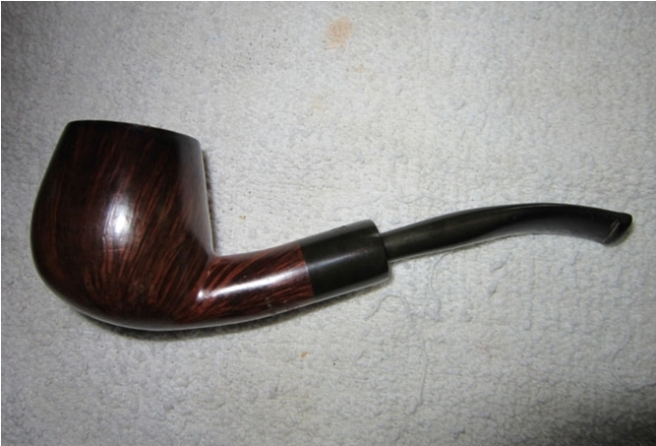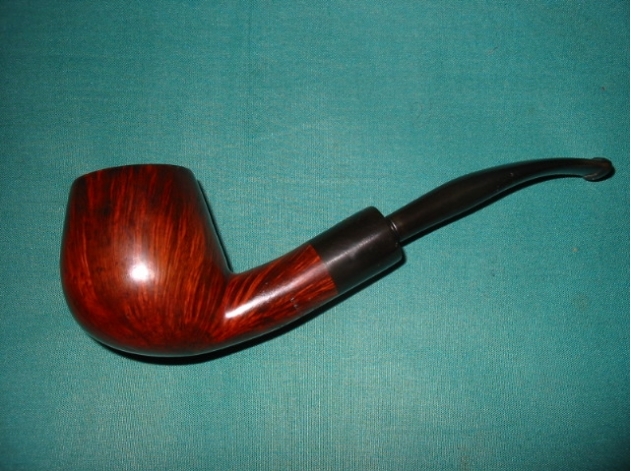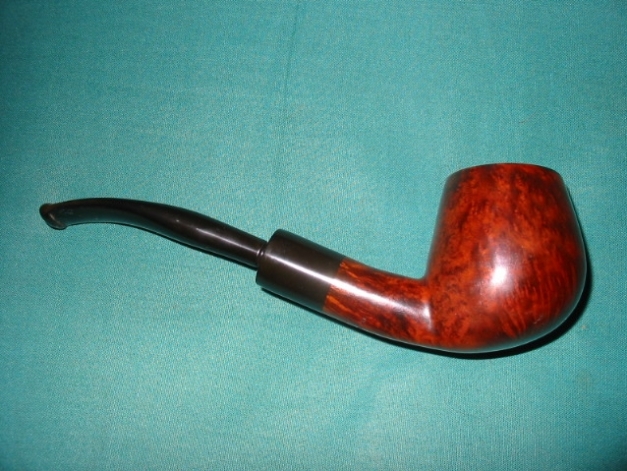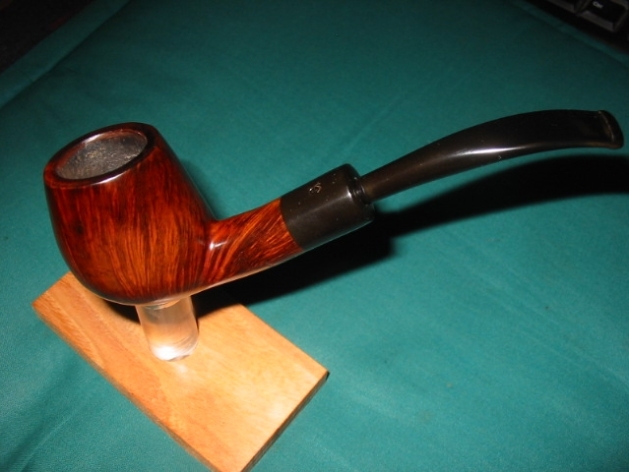by Kenneth Lieblich
A fine gentleman from Washington contacted me recently and asked if I would restore some pipes for him. Of course, I was only too happy to oblige. This is the first of the four, and it’s the only one that doesn’t have major issues. This is a Rossi Featherweight 44P acorn pipe. It’s a pretty little pipe and I’m sure will serve its owner well.

 The markings on the pipe were clear and sharp. On the left-hand side of the shank, read Nino Rossi [over] 1886 – and to the right of that, a star. On the right side of the shank was the word Featherweight. On the underside of the shank, was 44P and, to the right of that, at 90 degrees, was the word Italy. On the stem was a stylized letter N.
The markings on the pipe were clear and sharp. On the left-hand side of the shank, read Nino Rossi [over] 1886 – and to the right of that, a star. On the right side of the shank was the word Featherweight. On the underside of the shank, was 44P and, to the right of that, at 90 degrees, was the word Italy. On the stem was a stylized letter N.
 Rossi was founded by Ferdinando Rossi, in Italy, as Fabbrica di Pipe di Radica Rossi. The company dates from the mid-to-late 19th century. I would encourage you to read the Pipedia article on the company – there’s quite a bit of information: https://pipedia.org/wiki/Rossi. The article includes an important detail regarding this particular pipe:
Rossi was founded by Ferdinando Rossi, in Italy, as Fabbrica di Pipe di Radica Rossi. The company dates from the mid-to-late 19th century. I would encourage you to read the Pipedia article on the company – there’s quite a bit of information: https://pipedia.org/wiki/Rossi. The article includes an important detail regarding this particular pipe:
From, approximatively, seventies, until 1985, Rossi pipes were marked with “ROSSI”, into an oval (sometimes there was also “ITALY” on the shank); on the stem, there was “ROSSI”. In these years, appeared the signature “Nino Rossi” (in cursive font): he was the last heir of the factory.
From this point, we can deduce that this pipe is from the 1970s or ‘80s. Here is in an image capture from Pipephil: The pipe was in good condition and just needed some TLC to bring it back to working order. The stem was a bit dirty and thoroughly oxidized. The stummel was in decent shape, but it had a strange residue on the rim. I’d need to look into that more closely.
The pipe was in good condition and just needed some TLC to bring it back to working order. The stem was a bit dirty and thoroughly oxidized. The stummel was in decent shape, but it had a strange residue on the rim. I’d need to look into that more closely.

 First, I cleaned out the inside of the stem with pipe, cleaners and some lemon infused 99% isopropyl alcohol. It was pretty dirty, but not too terrible. I was more concerned about the oxidation, which was pretty heavy. I scrubbed it down with some SoftScrub cleanser and then tossed it in my deoxidizing fluid to sit overnight. The next day, I managed to scrub off even more oxidation with more SoftScrub.
First, I cleaned out the inside of the stem with pipe, cleaners and some lemon infused 99% isopropyl alcohol. It was pretty dirty, but not too terrible. I was more concerned about the oxidation, which was pretty heavy. I scrubbed it down with some SoftScrub cleanser and then tossed it in my deoxidizing fluid to sit overnight. The next day, I managed to scrub off even more oxidation with more SoftScrub.

 Before sanding the stem, I took out some nail polish and made sure to add it to the stylized N on the left side of the stem. I let that dry before moving on.
Before sanding the stem, I took out some nail polish and made sure to add it to the stylized N on the left side of the stem. I let that dry before moving on. I also repaired a few small nicks in the stem with some black cyanoacrylate adhesive and let it cure. That done, I proceeded to sand down the stem with my nine micromesh sanding pads. I also used some pipe stem oil during the sanding to bring out some extra lustre and beautify the stem.
I also repaired a few small nicks in the stem with some black cyanoacrylate adhesive and let it cure. That done, I proceeded to sand down the stem with my nine micromesh sanding pads. I also used some pipe stem oil during the sanding to bring out some extra lustre and beautify the stem.

 Just like the stem, I cleaned out the insides of the stummel with pipe, cleaners, cotton swabs, and alcohol. Took a bit of work, but I got it clean. In order to sort out the stuff stuck to the rim, I took a piece of machine metal and gently scraped it away, not wanting to do any more invasive work than I needed to. It came away reasonably easily and I carried on.
Just like the stem, I cleaned out the insides of the stummel with pipe, cleaners, cotton swabs, and alcohol. Took a bit of work, but I got it clean. In order to sort out the stuff stuck to the rim, I took a piece of machine metal and gently scraped it away, not wanting to do any more invasive work than I needed to. It came away reasonably easily and I carried on.

 I then set it up for a de-ghosting session. I put some cotton balls in the bowl and in the shank and saturated them with 99% isopropyl alcohol. I let that sit overnight to allow all of the lingering smells and stains leach out into the cotton. After that it was much improved. I wiped it down with some Murphy’s and finished up by scrubbing the insides with soap, and some tube brushes.
I then set it up for a de-ghosting session. I put some cotton balls in the bowl and in the shank and saturated them with 99% isopropyl alcohol. I let that sit overnight to allow all of the lingering smells and stains leach out into the cotton. After that it was much improved. I wiped it down with some Murphy’s and finished up by scrubbing the insides with soap, and some tube brushes.
 I sanded down the stummel with my micromesh pads to make it smooth and lovely. Of course, I added some of my restoration balm to the wood and let it sit for 20 minutes or so. BUT, there was a bit of a problem. The sanding and application of balm revealed some mottling on the surface of the briar. Clearly, there was some remnants of an old lacquer or shellac. It looked awful and I couldn’t let it be.
I sanded down the stummel with my micromesh pads to make it smooth and lovely. Of course, I added some of my restoration balm to the wood and let it sit for 20 minutes or so. BUT, there was a bit of a problem. The sanding and application of balm revealed some mottling on the surface of the briar. Clearly, there was some remnants of an old lacquer or shellac. It looked awful and I couldn’t let it be.


 I couldn’t get rid of it with any solvents, so, unfortunately, I had to re-sand the whole thing. That worked and it looked much improved.
I couldn’t get rid of it with any solvents, so, unfortunately, I had to re-sand the whole thing. That worked and it looked much improved. Finally, I applied some another batch of Before & After Restoration Balm and buffed it with a microfiber cloth. This balm does beautiful things to the wood and really generates a beautiful shine. I then took the pipe to my bench polisher and buffed it with White Diamond and a few coats of carnauba wax. Wow – the pipe really looks lovely.
Finally, I applied some another batch of Before & After Restoration Balm and buffed it with a microfiber cloth. This balm does beautiful things to the wood and really generates a beautiful shine. I then took the pipe to my bench polisher and buffed it with White Diamond and a few coats of carnauba wax. Wow – the pipe really looks lovely. This Nino Rossi Featherweight 44P acorn will suit my friend in Washington very well and I’m sure that he will appreciate smoking it for many years to come. I hope you enjoyed reading the story of this pipe as much I as I did restoring it. If you are interested in more of my work, please follow me here on Steve’s website or email me directly at kenneth@knightsofthepipe.com. Thank you very much for reading and, as always, I welcome and encourage your comments.
This Nino Rossi Featherweight 44P acorn will suit my friend in Washington very well and I’m sure that he will appreciate smoking it for many years to come. I hope you enjoyed reading the story of this pipe as much I as I did restoring it. If you are interested in more of my work, please follow me here on Steve’s website or email me directly at kenneth@knightsofthepipe.com. Thank you very much for reading and, as always, I welcome and encourage your comments.













